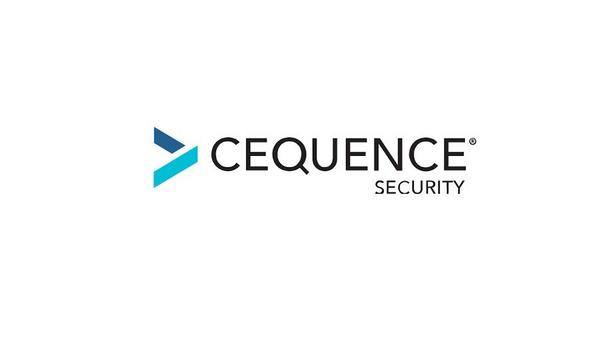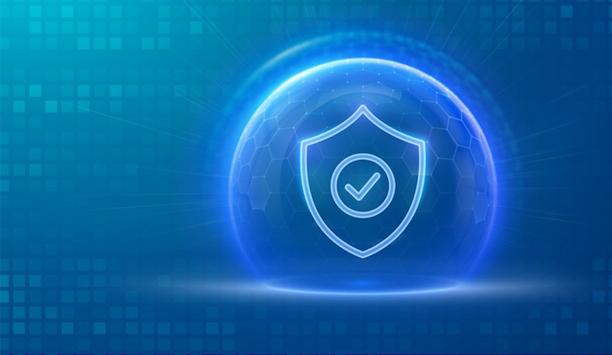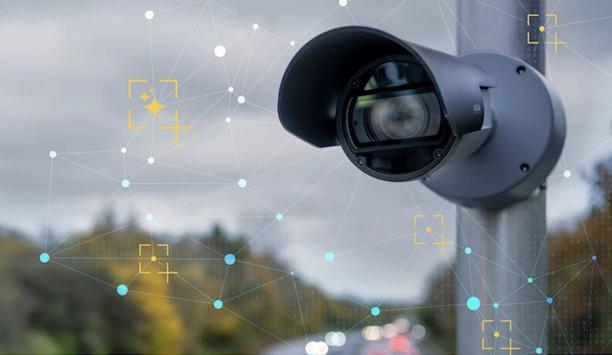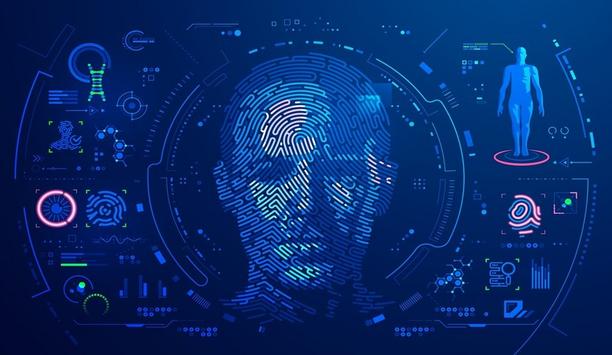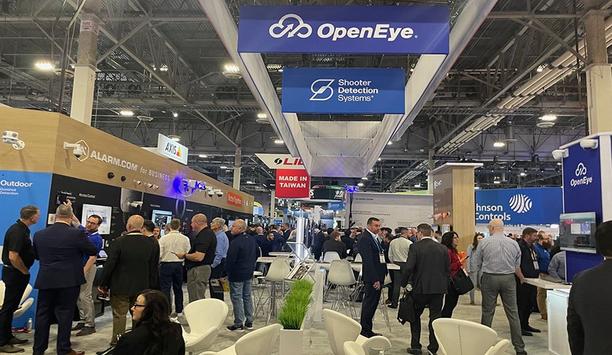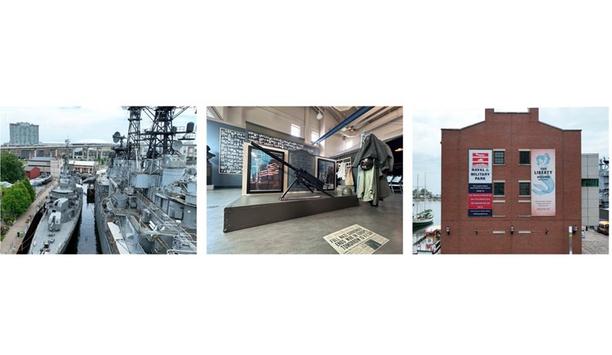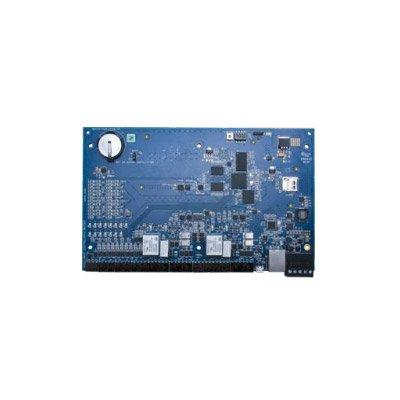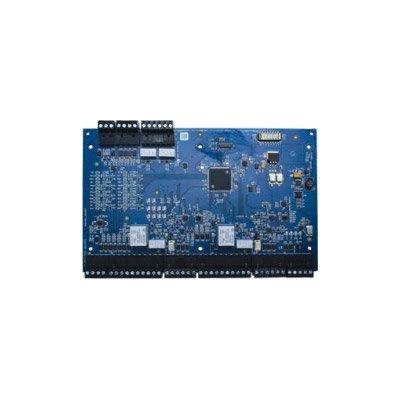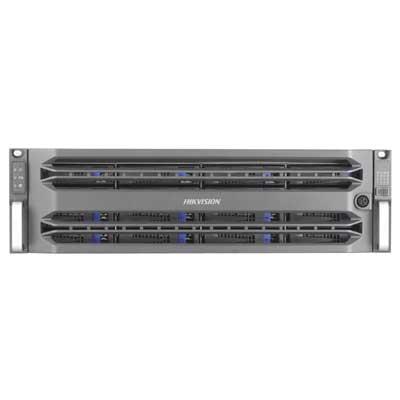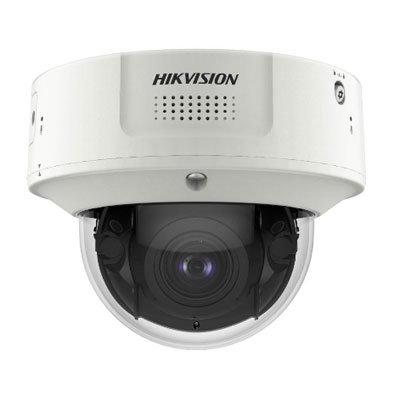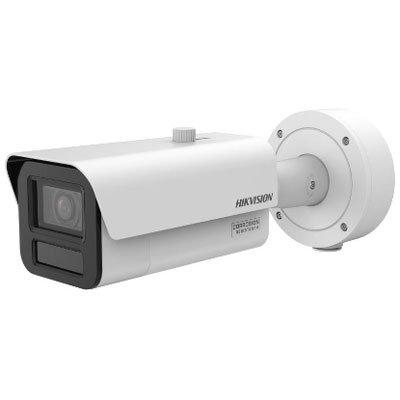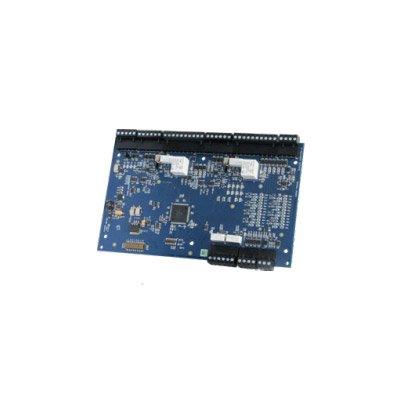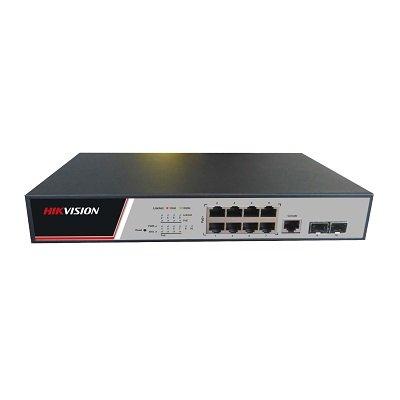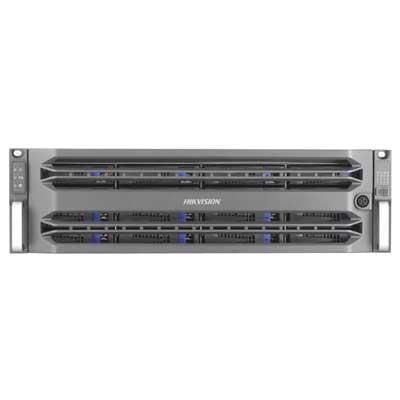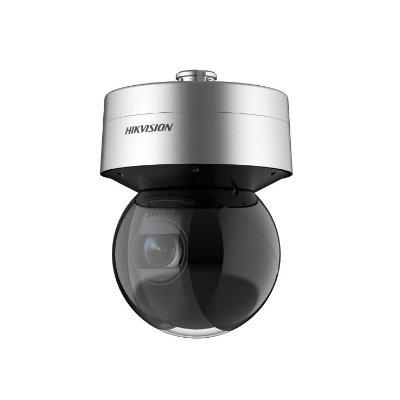Data Security
Cisco has made several transformative innovation and partnership announcements that will help security professionals secure and harness the power of AI. An increasingly sophisticated threat landscape combined with an expanding talent shortage means the need has never been greater for machine scale security and response. According to Cisco’s upcoming 2025 Cybersecurity Readiness Index, companies worldwide underestimate the complexities of securing AI, with 86% saying their organisations ha...
Cequence Security, a pioneer in API security and bot management, announces significant enhancements to its Unified API Protection (UAP) platform to deliver the industry’s first comprehensive security solution for agentic AI development, usage, and connectivity. This enhancement empowers organisations to secure every AI agent interaction, regardless of the development framework. By implementing robust guardrails, the solution protects both enterprise-hosted AI applications and external AI...
Bugcrowd, a pioneer in crowdsourced cybersecurity, announces the launch of the first-ever offering to apply the scale, agility, and incentive-driven power of crowdsourcing to red teaming. This new service connects customers with a global network of vetted ethical hackers for a variety of red team engagements — fully managed through the Bugcrowd Platform. This release sets a new benchmark in the red team services market, enabling organisations to test their security environments with...
Abnormal AI (Abnormal Security), the globally renowned company in AI-native human behaviour security, has unveiled its most ambitious product release to date — introducing autonomous AI agents that revolutionise how organisations train employees and report on risk, while also evolving its email security capabilities to continue to stop the world’s most advanced email attacks. In a year defined by the explosive use of malicious AI for cybercrime, Abnormal is doubling down on its miss...
Cowbell, a pioneering provider of cyber insurance for small and medium-sized enterprises (SMEs) and middle-market businesses, announced the UK launch of Prime One Tech; professional indemnity and cyber coverage for technology companies with up to £1 billion in annual turnover, providing limits of up to £5 million. Prime One Tech combines Cowbell’s flagship Prime One cyber programme with specialised PI technology coverage. It is enhanced by Cowbell Co-Pilot, a Generative AI-pow...
In a world of nonstop cyberattacks, Rubrik announced its newest upcoming solution, Identity Resilience, designed to secure the entire identity landscape alongside data. Identity Resilience aims to protect the most common entry points for attackers – human and non-human identities (NHIs) – to help organisations maintain operations with minimal downtime. Rubrik’s solution Rubrik’s solution is designed to secure this weak infrastructure that powers virtually Identi...
News
In today’s fast-evolving aviation landscape, innovation isn’t optional — it’s essential. With passenger traffic in the Asia-Pacific continuing to surge, the region is facing a pivotal moment: adapt with scalable tech, or fall behind. In January 2025 alone, APAC carriers accounted for 56.6% of global passenger traffic growth. Airports are operating at near capacity, with a record-high Passenger Load Factor (PLF) of 82.1%, leading to pronounced congestion at check-in counters, security checkpoints, and boarding gates. Increasing passenger volumes As airports strive to manage increasing passenger volumes without resorting to costly and time-consuming infrastructure expansions, technology — particularly facial recognition and biometric automation — emerges as a viable solution. However, the full realisation of these innovations requires more than just installing new system However, the full realisation of these innovations requires more than just installing new systems. It’s about building the right ecosystem of partners, processes, and policies to ensure sustainable, secure, and scalable growth. Presenting physical documents According to their estimates, over 120 APAC airports have already deployed biometric solutions at key travel touchpoints, including check-in, bag drop, security, and boarding. Thailand exemplifies this shift, with facial recognition deployed at six major airports — Suvarnabhumi, Don Mueang, Chiang Mai, Chiang Rai, Phuket, and Hat Yai — dramatically reducing passenger processing times. These systems allow travelers to verify their identities seamlessly at multiple touchpoints, from check-in and security screening to boarding gates, without presenting physical documents. This case reflects the Airports of Thailand’s (AOT) commitment to leveraging technology to improve operational efficiency and passenger experience. Digital identity programs Biometric solutions also extend beyond the airport: digital identity programs enable travelers to verify their identities before arriving at the terminal, creating seamless journeys from curb to gate. In this environment, facial recognition is not merely a futuristic innovation; it has become an operational imperative. Airports that fail to adapt risk falling behind, unable to manage burgeoning passenger volumes or meet evolving traveller expectations. True operational efficiency Despite its transformative potential, biometric technology cannot be successfully deployed in isolation. Achieving true operational efficiency through facial recognition requires strategic collaboration among technology vendors, IT integrators, airports, airlines, and regulatory authorities. Several pillars underpin a successful biometric implementation: Interoperability: Biometric systems must integrate seamlessly with a wide array of airline platforms, security protocols, and airport infrastructure. Lack of interoperability can lead to fragmented systems that frustrate staff and passengers alike. Scalability: Passenger volumes are forecasted to continue rising. Biometric solutions must be designed to scale rapidly in response to demand surges and future security challenges. Data Privacy and Security: With growing public scrutiny over personal data usage, airports must implement robust security frameworks that prioritise privacy and transparency. Encryption, consent-based use, and strict access controls are critical to gaining and retaining passenger trust. Future security challenges BKI can achieve significant throughput gains without major construction disruptions A case study illustrates these points: Malaysia’s planned revamp of Kota Kinabalu International Airport (BKI) aims to boost capacity by 33% over the next few years. Rather than expanding physical infrastructure alone, authorities are exploring facial recognition solutions to increase efficiency within existing spaces. By integrating biometric checkpoints at key touchpoints, BKI can achieve significant throughput gains without major construction disruptions. Such outcomes are only possible through well-coordinated technology partnerships, where vendors, airports, and integrators work toward a shared vision of future-ready travel. AI-powered computer vision What’s Next: Fully Biometric-Enabled Travel Looking ahead, the pressure on APAC airports is set to intensify. Airports Council International projects 9.5 billion air travelers globally by the end of 2025, a volume traditional processing methods cannot manage effectively. In response, AI-powered computer vision and facial recognition will continue to refine biometric processes, delivering higher accuracy rates and faster verification. Future systems will leverage real-time liveness detection, predictive analytics for crowd management, and seamless integrations across all travel stages. A fully biometric-enabled journey is becoming reality: Check-in with a glance at a kiosk Drop bags without producing an ID or boarding pass Clear security with automated facial recognition portals Board flights through biometric-enabled gates — without ever presenting a physical document. Experiencing significant growth Seamless integration across touchpoints creates a unified, frictionless journey In this vision of the future, identity becomes the ticket. Seamless integration across touchpoints creates a unified, frictionless journey. For APAC airports experiencing significant growth, full biometric enablement is becoming increasingly important for maintaining efficiency and staying competitive. At the same time, such a future demands robust technology ecosystems, where ongoing innovation is supported by partnerships that align regulatory, operational, and technological goals. Expanding physical infrastructure Building the Smart Airports of Tomorrow: Join the Conversation The aviation sector in APAC stands at a critical crossroads. Passenger growth, operational challenges, and heightened security requirements are converging, creating an urgent need for innovation. Facial recognition and biometric automation offer a clear path forward, enabling airports to handle growing volumes, enhance security, and deliver superior passenger experiences without necessarily expanding physical infrastructure. Facial recognition solutions Yet, the success of these innovations hinges on strategic, trusted technology partnerships. Airports must collaborate with technology vendors, IT system integrators, airlines, and regulators to ensure interoperability, scalability, and data security. At RecFaces, they believe the future of APAC airports is fully biometric-enabled. To explore how tech collaborations and advanced facial recognition solutions can transform airport operations, they invite users to join their free online panel discussion on April 30: ‘Smart Airports Start With Smart Tech: Facial Biometrics for APAC Airports.’
Kaseya, the pioneering provider of AI-powered cybersecurity and IT management software, has announced its Spring 2025 release with new features that equips MSPs and internal IT teams with new capabilities to automate workflows, enhance the end-user experience, and strengthen security posture ahead of Kaseya Connect, where the company will debut the latest evolution of Kaseya 365. “Innovation is not just part of our roadmap — it’s embedded in our DNA,” said Jim Lippie, Chief Product Officer at Kaseya. “Each enhancement in this release is a direct response to the evolving needs of our customers, enabling them to work more efficiently, securely and profitably.” Highlights from the Spring 2025 release Automated SOP Creation (IT Glue): Cooper Copilot now generates step-by-step SOPs in real-time, streamlining documentation and reducing manual effort. Self-Service Billing Control (KaseyaOne): Customers can now manage payment methods and autopay preferences directly, gaining full visibility and control of their subscriptions. One-Click DR Cleanup (Datto BCDR): Instantly clear active recovery resources in Datto Cloud to optimise infrastructure and boost restore performance. Secure, Seamless Network Access (Datto Networking + Datto RMM): SafeCheck enables quick, multifactor-authenticated endpoint access without enterprise-level complexity. Multilingual AI Support (BMS and Vorex): Cooper Copilot auto-detects user language preferences, enabling natural, fluent communication across global teams. Version-Specific File Restore (Datto Endpoint Backup): Restore exactly the file version you need, faster—thanks to a streamlined multi-version restore experience. These innovations, and many others, are featured on Kaseya’s Spring 2025 Innovations page.
Hikvision has achieved two prestigious international certifications: ETSI EN 303 645 and EN 18031. The certifications were awarded by Bureau Veritas, a globally renowned third-party inspection, testing and certification organisation. This achievement underscores Hikvision’s commitment to security and compliance in its IoT products. ETSI EN 303 645 certification ETSI EN 303 645 certification is a European standard focused on the security of IoT devices The ETSI EN 303 645 certification is a European standard focused on the security of consumer IoT devices. Obtaining this certification validates that a company's IoT products meet international standards in terms of privacy protection and data security, demonstrating their capability to create a safer IoT environment for users. EN 18031 certification The EN 18031 certification standard was developed by the Joint Technical Committee CEN-CENELEC JTC 13, Working Group 8 (WG8), which specialises in cybersecurity and data protection. The primary objective of this standard is to strengthen radio equipment's capability to protect security, network, privacy, and financial assets from common cybersecurity threats while mitigating known exploitable vulnerabilities. Hikvision security capabilities Hikvision has partnered with the Secura laboratory to jointly advance international certification In addition, Hikvision has partnered with the Netherlands-based Secura laboratory to jointly advance international certification cooperation related to the standards EN 303 645, EN 18031, and IEC 62443. The collaboration focuses on product security development processes, standardising the security requirements of IoT devices, and ensuring data security in radio equipment. By deepening cooperation in global security standards, Hikvision continues to enhance the security capabilities of its products provide global users with safer and more reliable intelligent security solutions. Smart IoT applications Leveraging its technical expertise and in-depth industry understanding in IoT perception and artificial intelligence, Hikvision has innovatively expanded its smart IoT applications. Multiple cybersecurity technologies developed by Hikvision have earned national-level scientific and technological innovation awards. Looking ahead, Hikvision remains committed to strengthening the construction of the security operations system, ensuring that every link complies with industry security standards, and contributes to the development of a secure ecosystem.
Lenovo announced its largest storage portfolio refresh in company history, unveiling new Lenovo Data Storage Solutions that prepare enterprise IT for the age of AI with better efficiency, performance and scalability. Ushering in a new era of AI-optimised storage that propels business transformation, the complete portfolio includes storage arrays, software defined storage (SDI), and new AI and virtualisation innovations to flexibly address rapidly evolving data operations. Lenovo’s ongoing commitment Using the solutions, businesses can easily run AI and data modernisation workloads on the next generation of trusted Lenovo ThinkSystem and ThinkAgile infrastructure, unleashing data to power real-time reasoning and confidently deploying AI and data modernisation workloads at scale. Businesses can easily run AI and data modernisation workloads on the next generation of trusted Lenovo ThinkSystem As business pioneers seek tangible ROI on AI investment, EMEA IDC research commissioned by Lenovo found that data sovereignty, compliance and quality data are the most important AI implementation success factors among CIOs while scaling AI and data quality are among the biggest obstacles. The new portfolio reflects Lenovo’s ongoing commitment to delivering innovative storage solutions that meet the evolving needs of modern data centres while helping businesses get the most out of their data. New Lenovo Data Storage Solutions “The new Lenovo Data Storage Solutions help businesses harness AI’s transformative power with a data-driven strategy that ensures scalability, interoperability, and tangible business outcomes powered by trusted infrastructure,” said Scott Tease, Vice President and General Manager of Infrastructure Solutions Product Group at Lenovo. “The new solutions help customers achieve faster time to value no matter where they are on their IT modernisation journey with turnkey AI solutions that mitigate risk and simplify deployment.” Next-generation data storage solutions Marco Pozzoni, Director, EMEA Storage Sales at Lenovo Infrastructure Solutions Group commented, “This is a pivotal moment for our customers across EMEA. With organisations facing a range of complex challenges, our largest-ever data storage portfolio refresh delivers the performance, efficiency, and data resiliency required by Data Modernisation and Enterprise AI workloads." "At a time when businesses are increasingly looking for ROI on their tech investments, these next-generation data storage solutions will empower our customers to unleash the power of their data, securely.” Solutions for enterprise AI, virtualisation, and sustainability Portfolio spans 21 new ThinkSystem and ThinkAgile models designed with accelerated computing and efficiency The portfolio spans 21 new ThinkSystem and ThinkAgile models designed with the accelerated computing and efficiency that companies need to kickstart their AI journey, supporting employee productivity and maximising value with solutions for enterprise AI, virtualisation and sustainability. Key innovations include turnkey AI Starter Kits, the industry’s first liquid-cooled HCI appliances and converged hybrid cloud and virtualisation solutions. The Data Storage Solutions are finetuned for easy deployment, faster inferencing, workload consolidation and lower total cost of ownership (TCO), delivering enhanced capabilities: Lenovo ThinkAgile SDI V4 Series provides full-stack, turnkey solutions that simplify IT infrastructure and accelerate computing for data-driven reasoning and faster time to value for AI LLM inferencing workloads. Engineered to put actionable data insights to work more quickly in business operations, the new Lenovo ThinkSystem Storage Arrays deliver up to 3x faster performance while reducing power consumption1, providing up to 97% energy savings and 99% density improvement over a Lenovo device featuring 10K HDDs for smaller data centre footprints and lower TCO and when upgrading legacy infrastructure2. New converged Lenovo ThinkAgile and ThinkSystem hybrid cloud and virtualisation solutions deliver flexible and efficient independent scaling of compute and storage capabilities, reducing software licencing costs up to 40 percent, maximising business value3. New Lenovo ThinkAgile HX Series GPT-in-a-Box solutions featuring Lenovo Neptune™ Liquid Cooling leverage the industry’s first liquid cooled HCI appliance to deliver turnkey AI inferencing that takes AI from concept to success across distributed applications, from edge to cloud, yielding up to 25% energy savings over previous generation to increase ROI and achieve data-driven breakthroughs4. New AI Starter Kits for Lenovo Hybrid AI Platform deliver a validated, flexible, and easy on-ramp for enterprise inferencing and retrieval-augmented (RAG) workflows. Kickstart the enterprise AI journey Businesses are moving to a disaggregated infrastructure model, turning compute, storage, and networking With AI on the rise and the challenge of supporting both legacy and modern workloads, organisations are rethinking how they approach IT. Businesses are moving to a disaggregated infrastructure model, turning compute, storage, and networking into on-demand, shared resources that can adapt to changing needs to boost scalability, efficiency, and flexibility. AI Starter Kits for Lenovo Hybrid AI Platform The AI Starter Kits for Lenovo Hybrid AI Platform are pre-configured infrastructure solutions engineered to simplify and accelerate the adoption of enterprise AI deployments. The validated configurations, comprising compute, storage, GPUs and networking, are built to scale alongside an organisation’s needs. Configured with the AI Starter Kits, the new ThinkSystem Series Storage Arrays deliver unified file, block, and object storage to eliminate data silos and leverage high-performance SSD flash technology for faster time to insight. Additionally, the AI Starter Kits include the new AI-powered autonomous ransomware protection, encryption for greater data protection and synchronous replication with transparent failover to ensure maximum solution uptime. Powering the new age of enterprise AI and data modernisation Enterprise AI projects depend on high-performance storage systems to keep up with the pace of model training Bringing accelerated computing to the source of enterprise data is critical to business success, and the infrastructure must evolve to meet this demand. Enterprise AI projects depend on high-performance storage systems to keep up with the pace and scale of model training, inference, and RAG. The Lenovo ThinkAgile SDI V4 Series and new Lenovo ThinkSystem Storage Arrays deliver full-stack, turnkey AI-ready infrastructure for enterprises beginning AI implementations while delivering faster inferencing performance for LLM workloads. The offerings are purpose-built for a broad range of enterprise AI and data modernisation workloads, from databases, ERP and CRM, to virtualisation, hybrid cloud, backup and archive. Primary AI use cases include AI inferencing, RAG, and fine-tuning AI models. Hybrid cloud and virtualisation solutions Capitalising on AI while optimising virtualisation requires a major evolution of storage infrastructure to accelerate data, optimise costs, and secure data assets. New converged hybrid cloud and virtualisation solutions deliver flexible and efficient independent scaling of compute and storage capabilities. For example, the new Lenovo ThinkAgile Converged Solution for VMware brings together the enterprise-class features of ThinkAgile VX Series, such as lifecycle management and operational simplicity, with the robust data-management offered by the ThinkSystem DG Series storage arrays to provide a unified cloud platform that is flexible and supports hybrid storage workloads. Industry-first liquid-cooled HCI brings GPT-in-a-box Lenovo now offers the industry’s first liquid-cooled HCI appliance as part of the ThinkAgile V4 series In addition to providing the broadest, most open set of data storage solutions, Lenovo now offers the industry’s first liquid-cooled HCI appliance as part of the ThinkAgile V4 series, improving efficiency for high-powered AI workloads and achieving up to 25 percent energy savings compared to previous generations4. Using this innovation, the new Lenovo GPT-in-a-box with Liquid Cooling full-stack generative AI solution with Lenovo ThinkAgile HX jumpstarts AI integration using a repeatable solution that lowers energy costs for faster data-powered AI reasoning that delivers faster ROI and innovation anywhere. Driving the future of AI evolution Lenovo’s next-generation technology combined with Lenovo Premier Enhanced Storage Support, supports IT teams with tailored expertise and rapid response times, delivering scalability, performance and reliability so organisations can deploy AI with confidence and innovate without the constraints of outdated infrastructure. “Innovation is embedded in OneNet’s DNA and partnering with Lenovo represents a commitment to modernising the data centre with cutting-edge solutions that drive efficiency and sustainability,” said Tony Weston, Chief Technology Officer at OneNet. “Backed by Lenovo solutions and Lenovo Premier Support, OneNet can deliver high-availability, high-performance private cloud services that our customers can depend on.” Next generation of Lenovo ThinkSystem and ThinkAgile ThinkSystem DG and DM storage arrays feature new AI-powered autonomous ransomware protection The next generation of Lenovo ThinkSystem and ThinkAgile solutions are also designed with integrated data security and resiliency features to lower operational risk and provide greater data protection, such as tamper-proof snapshots and software-based encryption. ThinkSystem DG and DM storage arrays feature new AI-powered autonomous ransomware protection, which elevates cyber resiliency by leveraging machine learning models to proactively detect and mitigate attacks. Lenovo’s XClarity systems management software The Lenovo Data Storage Solutions also feature Lenovo’s XClarity systems management software support, giving businesses comprehensive security features to ensure management, encryption, compliance, and communication for all managed storage solutions. With the next generation of AI-optimised, integrated solutions, Lenovo is empowering organisations to move quickly to modernise systems while ensuring the future-proofing of tech stacks, so customers across all industries can harness data to transform.
CSignum, the pioneering provider of wireless technology extending IoT communications beneath the surface, has completed a £6 million Series A funding round. The investment will accelerate growth of its EM-2 family of products which are transforming the way critical wireless sensor data is transmitted from submerged environments to networks above. CSignum to expand its presence New investment enables CSignum to expand its global presence, accelerate product development The funding round was led by Archangels, Par Equity, and Scottish Enterprise with additional investment from British Business Investment (BBI), Raptor Group, Deep Future, SeaAhead’s Blue Angel Network, and notable individual US investors. This new investment enables CSignum to expand its global presence, accelerate product development and address the growing demand for reliable, real-time data transmission for underwater and underground applications. Key applications for EM-2 systems CSignum’s EM-2 solutions represent a breakthrough in wireless communication technology, capable of reliably transmitting data, via patented electromagnetic field signalling (EMFS), through environments including water, ice, soil, rock and concrete to networks above the surface - an ability no other wireless method has successfully achieved to date. Key applications for EM-2 systems include water quality and environmental monitoring, wireless under-ship monitoring, and security applications for critical underwater infrastructure such as offshore wind turbines and oil and gas platforms. CSignum Cloud data services The company offers CSignum Cloud, providing data services to complete its wireless systems The company also offers CSignum Cloud, providing data services to complement its wireless systems. The company’s dashboard and analytics are successfully deployed on several river water quality monitoring projects. CSignum is working with customers in the UK, EU and US markets, to address growing environmental regulatory requirements. With upcoming deadlines for compliance, including large-scale real-time monitoring mandates under the AMP8 initiatives, the demand for innovative, wireless solutions presents a significant growth opportunity for CSignum and its EM-2 technology. Innovative communication solutions Jonathan Reeves, CEO at CSignum, said: “This investment reflects the growing recognition of the critical need for innovative communication solutions in the underwater IoT sector." "The support from our investors will allow us to scale our operations, enhance our product offerings and help industries worldwide manage their resources more effectively. We are grateful for their trust and excited to shape the future of underwater communication." CSignum technological breakthrough Dan McKiddie, Investment Manager at Archangels, said: “CSignum has developed a truly unique technological breakthrough which could be a game-changer for those industries reliant on securing reliable data from their underwater operations." "We’re looking forward to supporting the management team in their efforts to scale the business and disrupt the global market for underwater communication.” Reliable and cost-effective communication The underwater communications market is to double in size from $5.1B in 2024 to $10.2B by 2032 Claire Clamm, Investment Manager at Par Equity, said: "CSignum’s ability to deliver reliable and cost-effective communication solutions for challenging environments sets them apart in the market." "This funding will accelerate their journey to becoming a global pioneer in underwater data transmission. We are excited to partner with them as they expand their reach and capabilities." Real-time monitoring solutions Founded in 2020, CSignum is led by CEO Jonathan Reeves, is headquartered in Bathgate near Edinburgh, and plans to add additional staff in the UK, USA, and EU over the next year as it continues to scale its operations. The underwater communications market is expected to double in size from $5.1B in 2024 to $10.2B by 2032. The funding will be directed toward expanding the company’s engineering team, advancing its product portfolio and strengthening its market presence to meet the increasing demands for efficient, real-time monitoring solutions.
Axis Communications, the industry pioneer in video surveillance, has released its latest research report, ‘The State of AI in Video Surveillance,’ which explores global industry perspectives on the use of AI in the security industry and beyond. The report reveals current attitudes on AI technologies thanks to in-depth interviews with AI experts from Axis’ global network and a comprehensive survey of more than 5,800 respondents, including distributors, channel partners, and end customers across 68 countries. Opportunities for AI to improve safety The resulting insights cover AI integration and the opportunities and challenges that exist with regard to security, safety, business intelligence, and operational efficiency. The resulting insights cover AI integration and the options and challenges that exist with regard to security “AI remains one of the most powerful and transformative technologies within the video surveillance industry today,” said Mats Thulin, Director, AI & Analytics Solutions, Axis Communications. “This new research reveals that while there are significant opportunities for AI to improve safety and security alongside business intelligence and operational efficiency, there must be a focus on ethical implementation and meaningful integrations to drive continuous value.” AI’s impact on partners and end customers Axis’ research found that 62% of partners identify “AI and generative AI” as one of the most significant trends shaping the industry's future, compared to 34% of end customers. This positions AI as the top trend for partner businesses—tied with “cybersecurity, risk, and privacy,” which also garnered 62%. Among end customers, however, AI ranks third, with “cybersecurity, risk, and privacy” leading at 61%. Additionally, half of partner respondents highlighted “analytics and actionable insights” as a key trend, while 36% of end customers agree. Benefits of AI adoption The focus on AI and analytics signals a growing industry grasp of the many benefits of AI adoption Overall, the focus on AI and analytics signals a growing industry understanding of the many benefits of AI adoption, including greater efficiency, improved decision-making, and enhanced output quality. However, end customers consider cybersecurity, risk, and privacy to be a higher priority when it comes to technology integration, which likely signals ongoing ethical and compliance-related concerns surrounding AI. Trust, responsibility, and accountability will be critical if providers hope to lead customers toward greater AI integration. Top trends and opportunities for AI in video surveillance AI adoption surges – with inconsistencies between markets: AI adoption appears to be more advanced in certain markets like the US, Japan, Singapore, and certain parts of Europe, where customers are actively seeking AI solutions to improve surveillance capabilities and operational efficiency. The transition to cloud and edge AI continues to accelerate: Hybrid architectures are emerging as the preferred approach by many, combining the immediate processing capabilities of edge AI on cameras with the scalability and long-term data storage of the cloud. The integration of diverse data sources persists: Integrating additional sensory data to complement video data will continue, making an ongoing impact on safety and security while elevating business intelligence capabilities. Close partnership and collaboration help with effective, responsible AI integration: The ethical challenges associated with the rapid deployment of AI technologies, including solutions like facial recognition, underscore the importance of choosing the right partners with aligned values—especially in areas like privacy, compliance, and view on AI ethics. Dive deeper into these findings and more in the full ‘The State of AI in Video Surveillance’ report. Report methodology ‘The State of AI in Video Surveillance’ report combines insights from eleven in-depth interviews with carefully selected experts from Axis’ global partner network, each demonstrating a proven track record and extensive expertise in the field of AI. Complementing the interview findings are 4,900 survey responses from distributors and channel partners in 68 countries, as well as 900 survey responses from end customers in 64 countries. All interviews and surveys were conducted in 2024.
In today’s fast-evolving aviation landscape, innovation isn’t optional — it’s essential. With passenger traffic in the Asia-Pacific continuing to surge, the region is facing a pivotal moment: adapt with scalable tech, or fall behind. In January 2025 alone, APAC carriers accounted for 56.6% of global passenger traffic growth. Airports are operating at near capacity, with a record-high Passenger Load Factor (PLF) of 82.1%, leading to pronounced congestion at check-in counters, security checkpoints, and boarding gates. Increasing passenger volumes As airports strive to manage increasing passenger volumes without resorting to costly and time-consuming infrastructure expansions, technology — particularly facial recognition and biometric automation — emerges as a viable solution. However, the full realisation of these innovations requires more than just installing new system However, the full realisation of these innovations requires more than just installing new systems. It’s about building the right ecosystem of partners, processes, and policies to ensure sustainable, secure, and scalable growth. Presenting physical documents According to their estimates, over 120 APAC airports have already deployed biometric solutions at key travel touchpoints, including check-in, bag drop, security, and boarding. Thailand exemplifies this shift, with facial recognition deployed at six major airports — Suvarnabhumi, Don Mueang, Chiang Mai, Chiang Rai, Phuket, and Hat Yai — dramatically reducing passenger processing times. These systems allow travelers to verify their identities seamlessly at multiple touchpoints, from check-in and security screening to boarding gates, without presenting physical documents. This case reflects the Airports of Thailand’s (AOT) commitment to leveraging technology to improve operational efficiency and passenger experience. Digital identity programs Biometric solutions also extend beyond the airport: digital identity programs enable travelers to verify their identities before arriving at the terminal, creating seamless journeys from curb to gate. In this environment, facial recognition is not merely a futuristic innovation; it has become an operational imperative. Airports that fail to adapt risk falling behind, unable to manage burgeoning passenger volumes or meet evolving traveller expectations. True operational efficiency Despite its transformative potential, biometric technology cannot be successfully deployed in isolation. Achieving true operational efficiency through facial recognition requires strategic collaboration among technology vendors, IT integrators, airports, airlines, and regulatory authorities. Several pillars underpin a successful biometric implementation: Interoperability: Biometric systems must integrate seamlessly with a wide array of airline platforms, security protocols, and airport infrastructure. Lack of interoperability can lead to fragmented systems that frustrate staff and passengers alike. Scalability: Passenger volumes are forecasted to continue rising. Biometric solutions must be designed to scale rapidly in response to demand surges and future security challenges. Data Privacy and Security: With growing public scrutiny over personal data usage, airports must implement robust security frameworks that prioritise privacy and transparency. Encryption, consent-based use, and strict access controls are critical to gaining and retaining passenger trust. Future security challenges BKI can achieve significant throughput gains without major construction disruptions A case study illustrates these points: Malaysia’s planned revamp of Kota Kinabalu International Airport (BKI) aims to boost capacity by 33% over the next few years. Rather than expanding physical infrastructure alone, authorities are exploring facial recognition solutions to increase efficiency within existing spaces. By integrating biometric checkpoints at key touchpoints, BKI can achieve significant throughput gains without major construction disruptions. Such outcomes are only possible through well-coordinated technology partnerships, where vendors, airports, and integrators work toward a shared vision of future-ready travel. AI-powered computer vision What’s Next: Fully Biometric-Enabled Travel Looking ahead, the pressure on APAC airports is set to intensify. Airports Council International projects 9.5 billion air travelers globally by the end of 2025, a volume traditional processing methods cannot manage effectively. In response, AI-powered computer vision and facial recognition will continue to refine biometric processes, delivering higher accuracy rates and faster verification. Future systems will leverage real-time liveness detection, predictive analytics for crowd management, and seamless integrations across all travel stages. A fully biometric-enabled journey is becoming reality: Check-in with a glance at a kiosk Drop bags without producing an ID or boarding pass Clear security with automated facial recognition portals Board flights through biometric-enabled gates — without ever presenting a physical document. Experiencing significant growth Seamless integration across touchpoints creates a unified, frictionless journey In this vision of the future, identity becomes the ticket. Seamless integration across touchpoints creates a unified, frictionless journey. For APAC airports experiencing significant growth, full biometric enablement is becoming increasingly important for maintaining efficiency and staying competitive. At the same time, such a future demands robust technology ecosystems, where ongoing innovation is supported by partnerships that align regulatory, operational, and technological goals. Expanding physical infrastructure Building the Smart Airports of Tomorrow: Join the Conversation The aviation sector in APAC stands at a critical crossroads. Passenger growth, operational challenges, and heightened security requirements are converging, creating an urgent need for innovation. Facial recognition and biometric automation offer a clear path forward, enabling airports to handle growing volumes, enhance security, and deliver superior passenger experiences without necessarily expanding physical infrastructure. Facial recognition solutions Yet, the success of these innovations hinges on strategic, trusted technology partnerships. Airports must collaborate with technology vendors, IT system integrators, airlines, and regulators to ensure interoperability, scalability, and data security. At RecFaces, they believe the future of APAC airports is fully biometric-enabled. To explore how tech collaborations and advanced facial recognition solutions can transform airport operations, they invite users to join their free online panel discussion on April 30: ‘Smart Airports Start With Smart Tech: Facial Biometrics for APAC Airports.’
Kaseya, the pioneering provider of AI-powered cybersecurity and IT management software, has announced its Spring 2025 release with new features that equips MSPs and internal IT teams with new capabilities to automate workflows, enhance the end-user experience, and strengthen security posture ahead of Kaseya Connect, where the company will debut the latest evolution of Kaseya 365. “Innovation is not just part of our roadmap — it’s embedded in our DNA,” said Jim Lippie, Chief Product Officer at Kaseya. “Each enhancement in this release is a direct response to the evolving needs of our customers, enabling them to work more efficiently, securely and profitably.” Highlights from the Spring 2025 release Automated SOP Creation (IT Glue): Cooper Copilot now generates step-by-step SOPs in real-time, streamlining documentation and reducing manual effort. Self-Service Billing Control (KaseyaOne): Customers can now manage payment methods and autopay preferences directly, gaining full visibility and control of their subscriptions. One-Click DR Cleanup (Datto BCDR): Instantly clear active recovery resources in Datto Cloud to optimise infrastructure and boost restore performance. Secure, Seamless Network Access (Datto Networking + Datto RMM): SafeCheck enables quick, multifactor-authenticated endpoint access without enterprise-level complexity. Multilingual AI Support (BMS and Vorex): Cooper Copilot auto-detects user language preferences, enabling natural, fluent communication across global teams. Version-Specific File Restore (Datto Endpoint Backup): Restore exactly the file version you need, faster—thanks to a streamlined multi-version restore experience. These innovations, and many others, are featured on Kaseya’s Spring 2025 Innovations page.
Hikvision has achieved two prestigious international certifications: ETSI EN 303 645 and EN 18031. The certifications were awarded by Bureau Veritas, a globally renowned third-party inspection, testing and certification organisation. This achievement underscores Hikvision’s commitment to security and compliance in its IoT products. ETSI EN 303 645 certification ETSI EN 303 645 certification is a European standard focused on the security of IoT devices The ETSI EN 303 645 certification is a European standard focused on the security of consumer IoT devices. Obtaining this certification validates that a company's IoT products meet international standards in terms of privacy protection and data security, demonstrating their capability to create a safer IoT environment for users. EN 18031 certification The EN 18031 certification standard was developed by the Joint Technical Committee CEN-CENELEC JTC 13, Working Group 8 (WG8), which specialises in cybersecurity and data protection. The primary objective of this standard is to strengthen radio equipment's capability to protect security, network, privacy, and financial assets from common cybersecurity threats while mitigating known exploitable vulnerabilities. Hikvision security capabilities Hikvision has partnered with the Secura laboratory to jointly advance international certification In addition, Hikvision has partnered with the Netherlands-based Secura laboratory to jointly advance international certification cooperation related to the standards EN 303 645, EN 18031, and IEC 62443. The collaboration focuses on product security development processes, standardising the security requirements of IoT devices, and ensuring data security in radio equipment. By deepening cooperation in global security standards, Hikvision continues to enhance the security capabilities of its products provide global users with safer and more reliable intelligent security solutions. Smart IoT applications Leveraging its technical expertise and in-depth industry understanding in IoT perception and artificial intelligence, Hikvision has innovatively expanded its smart IoT applications. Multiple cybersecurity technologies developed by Hikvision have earned national-level scientific and technological innovation awards. Looking ahead, Hikvision remains committed to strengthening the construction of the security operations system, ensuring that every link complies with industry security standards, and contributes to the development of a secure ecosystem.
Lenovo announced its largest storage portfolio refresh in company history, unveiling new Lenovo Data Storage Solutions that prepare enterprise IT for the age of AI with better efficiency, performance and scalability. Ushering in a new era of AI-optimised storage that propels business transformation, the complete portfolio includes storage arrays, software defined storage (SDI), and new AI and virtualisation innovations to flexibly address rapidly evolving data operations. Lenovo’s ongoing commitment Using the solutions, businesses can easily run AI and data modernisation workloads on the next generation of trusted Lenovo ThinkSystem and ThinkAgile infrastructure, unleashing data to power real-time reasoning and confidently deploying AI and data modernisation workloads at scale. Businesses can easily run AI and data modernisation workloads on the next generation of trusted Lenovo ThinkSystem As business pioneers seek tangible ROI on AI investment, EMEA IDC research commissioned by Lenovo found that data sovereignty, compliance and quality data are the most important AI implementation success factors among CIOs while scaling AI and data quality are among the biggest obstacles. The new portfolio reflects Lenovo’s ongoing commitment to delivering innovative storage solutions that meet the evolving needs of modern data centres while helping businesses get the most out of their data. New Lenovo Data Storage Solutions “The new Lenovo Data Storage Solutions help businesses harness AI’s transformative power with a data-driven strategy that ensures scalability, interoperability, and tangible business outcomes powered by trusted infrastructure,” said Scott Tease, Vice President and General Manager of Infrastructure Solutions Product Group at Lenovo. “The new solutions help customers achieve faster time to value no matter where they are on their IT modernisation journey with turnkey AI solutions that mitigate risk and simplify deployment.” Next-generation data storage solutions Marco Pozzoni, Director, EMEA Storage Sales at Lenovo Infrastructure Solutions Group commented, “This is a pivotal moment for our customers across EMEA. With organisations facing a range of complex challenges, our largest-ever data storage portfolio refresh delivers the performance, efficiency, and data resiliency required by Data Modernisation and Enterprise AI workloads." "At a time when businesses are increasingly looking for ROI on their tech investments, these next-generation data storage solutions will empower our customers to unleash the power of their data, securely.” Solutions for enterprise AI, virtualisation, and sustainability Portfolio spans 21 new ThinkSystem and ThinkAgile models designed with accelerated computing and efficiency The portfolio spans 21 new ThinkSystem and ThinkAgile models designed with the accelerated computing and efficiency that companies need to kickstart their AI journey, supporting employee productivity and maximising value with solutions for enterprise AI, virtualisation and sustainability. Key innovations include turnkey AI Starter Kits, the industry’s first liquid-cooled HCI appliances and converged hybrid cloud and virtualisation solutions. The Data Storage Solutions are finetuned for easy deployment, faster inferencing, workload consolidation and lower total cost of ownership (TCO), delivering enhanced capabilities: Lenovo ThinkAgile SDI V4 Series provides full-stack, turnkey solutions that simplify IT infrastructure and accelerate computing for data-driven reasoning and faster time to value for AI LLM inferencing workloads. Engineered to put actionable data insights to work more quickly in business operations, the new Lenovo ThinkSystem Storage Arrays deliver up to 3x faster performance while reducing power consumption1, providing up to 97% energy savings and 99% density improvement over a Lenovo device featuring 10K HDDs for smaller data centre footprints and lower TCO and when upgrading legacy infrastructure2. New converged Lenovo ThinkAgile and ThinkSystem hybrid cloud and virtualisation solutions deliver flexible and efficient independent scaling of compute and storage capabilities, reducing software licencing costs up to 40 percent, maximising business value3. New Lenovo ThinkAgile HX Series GPT-in-a-Box solutions featuring Lenovo Neptune™ Liquid Cooling leverage the industry’s first liquid cooled HCI appliance to deliver turnkey AI inferencing that takes AI from concept to success across distributed applications, from edge to cloud, yielding up to 25% energy savings over previous generation to increase ROI and achieve data-driven breakthroughs4. New AI Starter Kits for Lenovo Hybrid AI Platform deliver a validated, flexible, and easy on-ramp for enterprise inferencing and retrieval-augmented (RAG) workflows. Kickstart the enterprise AI journey Businesses are moving to a disaggregated infrastructure model, turning compute, storage, and networking With AI on the rise and the challenge of supporting both legacy and modern workloads, organisations are rethinking how they approach IT. Businesses are moving to a disaggregated infrastructure model, turning compute, storage, and networking into on-demand, shared resources that can adapt to changing needs to boost scalability, efficiency, and flexibility. AI Starter Kits for Lenovo Hybrid AI Platform The AI Starter Kits for Lenovo Hybrid AI Platform are pre-configured infrastructure solutions engineered to simplify and accelerate the adoption of enterprise AI deployments. The validated configurations, comprising compute, storage, GPUs and networking, are built to scale alongside an organisation’s needs. Configured with the AI Starter Kits, the new ThinkSystem Series Storage Arrays deliver unified file, block, and object storage to eliminate data silos and leverage high-performance SSD flash technology for faster time to insight. Additionally, the AI Starter Kits include the new AI-powered autonomous ransomware protection, encryption for greater data protection and synchronous replication with transparent failover to ensure maximum solution uptime. Powering the new age of enterprise AI and data modernisation Enterprise AI projects depend on high-performance storage systems to keep up with the pace of model training Bringing accelerated computing to the source of enterprise data is critical to business success, and the infrastructure must evolve to meet this demand. Enterprise AI projects depend on high-performance storage systems to keep up with the pace and scale of model training, inference, and RAG. The Lenovo ThinkAgile SDI V4 Series and new Lenovo ThinkSystem Storage Arrays deliver full-stack, turnkey AI-ready infrastructure for enterprises beginning AI implementations while delivering faster inferencing performance for LLM workloads. The offerings are purpose-built for a broad range of enterprise AI and data modernisation workloads, from databases, ERP and CRM, to virtualisation, hybrid cloud, backup and archive. Primary AI use cases include AI inferencing, RAG, and fine-tuning AI models. Hybrid cloud and virtualisation solutions Capitalising on AI while optimising virtualisation requires a major evolution of storage infrastructure to accelerate data, optimise costs, and secure data assets. New converged hybrid cloud and virtualisation solutions deliver flexible and efficient independent scaling of compute and storage capabilities. For example, the new Lenovo ThinkAgile Converged Solution for VMware brings together the enterprise-class features of ThinkAgile VX Series, such as lifecycle management and operational simplicity, with the robust data-management offered by the ThinkSystem DG Series storage arrays to provide a unified cloud platform that is flexible and supports hybrid storage workloads. Industry-first liquid-cooled HCI brings GPT-in-a-box Lenovo now offers the industry’s first liquid-cooled HCI appliance as part of the ThinkAgile V4 series In addition to providing the broadest, most open set of data storage solutions, Lenovo now offers the industry’s first liquid-cooled HCI appliance as part of the ThinkAgile V4 series, improving efficiency for high-powered AI workloads and achieving up to 25 percent energy savings compared to previous generations4. Using this innovation, the new Lenovo GPT-in-a-box with Liquid Cooling full-stack generative AI solution with Lenovo ThinkAgile HX jumpstarts AI integration using a repeatable solution that lowers energy costs for faster data-powered AI reasoning that delivers faster ROI and innovation anywhere. Driving the future of AI evolution Lenovo’s next-generation technology combined with Lenovo Premier Enhanced Storage Support, supports IT teams with tailored expertise and rapid response times, delivering scalability, performance and reliability so organisations can deploy AI with confidence and innovate without the constraints of outdated infrastructure. “Innovation is embedded in OneNet’s DNA and partnering with Lenovo represents a commitment to modernising the data centre with cutting-edge solutions that drive efficiency and sustainability,” said Tony Weston, Chief Technology Officer at OneNet. “Backed by Lenovo solutions and Lenovo Premier Support, OneNet can deliver high-availability, high-performance private cloud services that our customers can depend on.” Next generation of Lenovo ThinkSystem and ThinkAgile ThinkSystem DG and DM storage arrays feature new AI-powered autonomous ransomware protection The next generation of Lenovo ThinkSystem and ThinkAgile solutions are also designed with integrated data security and resiliency features to lower operational risk and provide greater data protection, such as tamper-proof snapshots and software-based encryption. ThinkSystem DG and DM storage arrays feature new AI-powered autonomous ransomware protection, which elevates cyber resiliency by leveraging machine learning models to proactively detect and mitigate attacks. Lenovo’s XClarity systems management software The Lenovo Data Storage Solutions also feature Lenovo’s XClarity systems management software support, giving businesses comprehensive security features to ensure management, encryption, compliance, and communication for all managed storage solutions. With the next generation of AI-optimised, integrated solutions, Lenovo is empowering organisations to move quickly to modernise systems while ensuring the future-proofing of tech stacks, so customers across all industries can harness data to transform.
CSignum, the pioneering provider of wireless technology extending IoT communications beneath the surface, has completed a £6 million Series A funding round. The investment will accelerate growth of its EM-2 family of products which are transforming the way critical wireless sensor data is transmitted from submerged environments to networks above. CSignum to expand its presence New investment enables CSignum to expand its global presence, accelerate product development The funding round was led by Archangels, Par Equity, and Scottish Enterprise with additional investment from British Business Investment (BBI), Raptor Group, Deep Future, SeaAhead’s Blue Angel Network, and notable individual US investors. This new investment enables CSignum to expand its global presence, accelerate product development and address the growing demand for reliable, real-time data transmission for underwater and underground applications. Key applications for EM-2 systems CSignum’s EM-2 solutions represent a breakthrough in wireless communication technology, capable of reliably transmitting data, via patented electromagnetic field signalling (EMFS), through environments including water, ice, soil, rock and concrete to networks above the surface - an ability no other wireless method has successfully achieved to date. Key applications for EM-2 systems include water quality and environmental monitoring, wireless under-ship monitoring, and security applications for critical underwater infrastructure such as offshore wind turbines and oil and gas platforms. CSignum Cloud data services The company offers CSignum Cloud, providing data services to complete its wireless systems The company also offers CSignum Cloud, providing data services to complement its wireless systems. The company’s dashboard and analytics are successfully deployed on several river water quality monitoring projects. CSignum is working with customers in the UK, EU and US markets, to address growing environmental regulatory requirements. With upcoming deadlines for compliance, including large-scale real-time monitoring mandates under the AMP8 initiatives, the demand for innovative, wireless solutions presents a significant growth opportunity for CSignum and its EM-2 technology. Innovative communication solutions Jonathan Reeves, CEO at CSignum, said: “This investment reflects the growing recognition of the critical need for innovative communication solutions in the underwater IoT sector." "The support from our investors will allow us to scale our operations, enhance our product offerings and help industries worldwide manage their resources more effectively. We are grateful for their trust and excited to shape the future of underwater communication." CSignum technological breakthrough Dan McKiddie, Investment Manager at Archangels, said: “CSignum has developed a truly unique technological breakthrough which could be a game-changer for those industries reliant on securing reliable data from their underwater operations." "We’re looking forward to supporting the management team in their efforts to scale the business and disrupt the global market for underwater communication.” Reliable and cost-effective communication The underwater communications market is to double in size from $5.1B in 2024 to $10.2B by 2032 Claire Clamm, Investment Manager at Par Equity, said: "CSignum’s ability to deliver reliable and cost-effective communication solutions for challenging environments sets them apart in the market." "This funding will accelerate their journey to becoming a global pioneer in underwater data transmission. We are excited to partner with them as they expand their reach and capabilities." Real-time monitoring solutions Founded in 2020, CSignum is led by CEO Jonathan Reeves, is headquartered in Bathgate near Edinburgh, and plans to add additional staff in the UK, USA, and EU over the next year as it continues to scale its operations. The underwater communications market is expected to double in size from $5.1B in 2024 to $10.2B by 2032. The funding will be directed toward expanding the company’s engineering team, advancing its product portfolio and strengthening its market presence to meet the increasing demands for efficient, real-time monitoring solutions.
Axis Communications, the industry pioneer in video surveillance, has released its latest research report, ‘The State of AI in Video Surveillance,’ which explores global industry perspectives on the use of AI in the security industry and beyond. The report reveals current attitudes on AI technologies thanks to in-depth interviews with AI experts from Axis’ global network and a comprehensive survey of more than 5,800 respondents, including distributors, channel partners, and end customers across 68 countries. Opportunities for AI to improve safety The resulting insights cover AI integration and the opportunities and challenges that exist with regard to security, safety, business intelligence, and operational efficiency. The resulting insights cover AI integration and the options and challenges that exist with regard to security “AI remains one of the most powerful and transformative technologies within the video surveillance industry today,” said Mats Thulin, Director, AI & Analytics Solutions, Axis Communications. “This new research reveals that while there are significant opportunities for AI to improve safety and security alongside business intelligence and operational efficiency, there must be a focus on ethical implementation and meaningful integrations to drive continuous value.” AI’s impact on partners and end customers Axis’ research found that 62% of partners identify “AI and generative AI” as one of the most significant trends shaping the industry's future, compared to 34% of end customers. This positions AI as the top trend for partner businesses—tied with “cybersecurity, risk, and privacy,” which also garnered 62%. Among end customers, however, AI ranks third, with “cybersecurity, risk, and privacy” leading at 61%. Additionally, half of partner respondents highlighted “analytics and actionable insights” as a key trend, while 36% of end customers agree. Benefits of AI adoption The focus on AI and analytics signals a growing industry grasp of the many benefits of AI adoption Overall, the focus on AI and analytics signals a growing industry understanding of the many benefits of AI adoption, including greater efficiency, improved decision-making, and enhanced output quality. However, end customers consider cybersecurity, risk, and privacy to be a higher priority when it comes to technology integration, which likely signals ongoing ethical and compliance-related concerns surrounding AI. Trust, responsibility, and accountability will be critical if providers hope to lead customers toward greater AI integration. Top trends and opportunities for AI in video surveillance AI adoption surges – with inconsistencies between markets: AI adoption appears to be more advanced in certain markets like the US, Japan, Singapore, and certain parts of Europe, where customers are actively seeking AI solutions to improve surveillance capabilities and operational efficiency. The transition to cloud and edge AI continues to accelerate: Hybrid architectures are emerging as the preferred approach by many, combining the immediate processing capabilities of edge AI on cameras with the scalability and long-term data storage of the cloud. The integration of diverse data sources persists: Integrating additional sensory data to complement video data will continue, making an ongoing impact on safety and security while elevating business intelligence capabilities. Close partnership and collaboration help with effective, responsible AI integration: The ethical challenges associated with the rapid deployment of AI technologies, including solutions like facial recognition, underscore the importance of choosing the right partners with aligned values—especially in areas like privacy, compliance, and view on AI ethics. Dive deeper into these findings and more in the full ‘The State of AI in Video Surveillance’ report. Report methodology ‘The State of AI in Video Surveillance’ report combines insights from eleven in-depth interviews with carefully selected experts from Axis’ global partner network, each demonstrating a proven track record and extensive expertise in the field of AI. Complementing the interview findings are 4,900 survey responses from distributors and channel partners in 68 countries, as well as 900 survey responses from end customers in 64 countries. All interviews and surveys were conducted in 2024.


Expert commentary
Technology advances in the security industry are transforming the way modern systems are designed and installed. Customers today are looking for greater scalability and flexibility, lower up-front costs, and operational efficiency. Cloud-based software as a service (SaaS) solutions, AI-enhanced tools, and IoT-enabled sensors and devices are increasingly in demand. The traditional role of the systems integrator is evolving as a result. While security integrators have always worked closely with end users, today’s pioneers go beyond installation and maintenance. They align security strategies with evolving business needs, integrating IT, cybersecurity, and data-driven insights into their offerings. A look at the past and present Integrators are often asked to help tailor solutions and provide expertise in IT and cybersecurity Traditionally, systems integrators specialised in installing and maintaining wired physical security systems like CCTV, access control, and alarms. The service model was built around large, up-front investments and project-based installations. However, today customers are seeking comprehensive solutions. They’re looking to wirelessly integrate security infrastructure with cloud-based SaaS systems and IoT devices. While modern systems are often faster to deploy, they’re most effective when supported by ongoing consulting and strategic planning. Integrators are often asked to help tailor solutions and provide expertise in IT and cybersecurity. Data requirements and modern systems Data requirements have also changed. Modern systems collect vast amounts of data. Advanced analytics, machine learning, and automation are now must-have tools for actionable insights. Security integrators can help end users set up custom dashboards, automations, and continuous system optimisation. Let’s look at some of the specific ways the role of systems integrators is evolving and how to adapt and succeed. Strengthen your IT expertise Integrators with IT expertise can ensure that hardware is optimised and maintained for peak performance The competitive landscape today includes not just security specialists but also IT-focused integrators and SaaS providers. Systems integrators with expertise in traditional physical security solutions plus IT experience offer unique value. They understand the real-world security challenges and opportunities, along with cybersecurity and network best practices. Integrators with IT expertise can also ensure that hardware is optimised and maintained for peak performance. Their experience with legacy systems allows them to offer practical recommendations on cost-effective approaches, such as upgrading or integrating older hardware with new digital solutions. Consider who’s making the purchase decisions Traditionally, security integrators primarily sold to security directors, facility managers, and operations teams. Now, multiple stakeholders may be involved in decision-making. IT teams, CIOs, and CTOs often weigh in on purchase decisions when cloud-based security and SaaS solutions are under consideration. Customers today aren’t just shopping for cameras, access control panels, alarms, and other hardware components. They’re looking for security ecosystems that can integrate with enterprise-wide IT infrastructure and business applications. When working with these different teams, consider outlining the system's return on investment (ROI). How can the solution reduce risk for various departments? Can it help improve operational efficiency or reduce the time required to onboard and train staff? Will it make regulatory compliance easier to manage? Focus on the long-term value for the entire organisation. Take a consultative approach Another way systems integrators are adding value is by offering vertical specialisation Installation fees remain important for many integrators, but there may be additional consultative opportunities to build long-term relationships with customers. Offer services such as roadmap planning, hardware and integration maintenance, training to certify end users on the manufacturer’s product, and cybersecurity services. While cloud-based solutions reduce on-premises maintenance, they don’t eliminate the need for ongoing support and training. Consider offering training opportunities. These can lead to other benefits as well. Better-educated and technically proficient customers are usually more willing to adopt new technologies. They understand the value of these investments and have more confidence that they’ll see results. Another way systems integrators are adding value is by offering vertical specialisation. Healthcare, sports venues, critical infrastructure, education, retail - each specialty has its own set of challenges, partner networks, regulatory restrictions, training needs, and business requirements. Integrators who specialise are uniquely positioned to offer key sector-specific insights that are invaluable to their clients. Embrace the cloud A key growth area for integrators is supporting customers in their shift to cloud deployments. Cloud solutions aren’t a one-size-fits-all solution. Each organisation is evaluating options and deciding whether cloud, hybrid, or fully on-prem solutions are the right fit for its unique needs. A key growth area for integrators is helping clients in their shift to cloud deployments Helping customers navigate and adopt cloud or hybrid solutions opens new opportunities to expand your business and deepen your relationship with your customers. Systems integrators who sell cloud solutions have the opportunity to add new layers to services for more value for customers. With a cloud solution that's easy and fast to deploy and managed and maintained by the provider, you can reduce overhead costs, staff training, and truck rolls via remote customer support. These benefits also allow you to spend time developing greater expertise in your customers’ processes. Using this knowledge, you can tailor your services towards potential productivity gains for your customers and turn them into additional sales. You ensure that your customers get the most out of the technology that’s available and that they have already purchased. Highlight your focus on cybersecurity Cybersecurity is no longer solely an IT department's responsibility. While dedicated IT security teams may still handle broader network defense, integrators play a crucial role in securing access control, surveillance, and IoT devices within a security framework. If unsecured, these devices can provide an entry point for cyber criminals to gain access to an organisation’s network. Cybersecurity is no longer solely an IT department's responsibility To best protect end users from cyberattacks, choose physical security systems with built-in security and privacy-by-design features. Help customers implement best practices to ensure their entire ecosystem is designed, built, and managed with end-to-end security in mind. Once implemented, work with your manufacturers, consultants, and end users to ensure that vulnerabilities are identified and mitigated. Every person on the network plays a role in keeping cyber threats at bay. Lean into the power of partnerships In today’s complex and dynamic security landscape, choosing the right technology partners is crucial. Ask potential partners to share their technology roadmap, and how you can offer feedback or participate in discussions about industry trends. Ideally, your partners will have a program in place to get input from integrators and end users, so they can develop products that are designed to address their most pressing issues and concerns. Your manufacturer partners should be working to help identify the evolving needs of customers and communicate these insights to systems integrators. Seek partners who actively support integrators to understand how security is evolving In addition to a good experience for the end user, strong manufacturer partners also offer solutions to streamline and automate workflows for integrators. It should be easy to order and check your shipping statuses online, for example. These are simple things that save you time and demonstrate your partner’s care for your business. Seek partners who actively support integrators to understand how security is evolving. While training is often offered on-site, some companies are now also offering blended learning models so integrators and their technicians can reduce classroom time and stay out in the field. Evolution is an opportunity Security integrators with traditional physical security expertise remain indispensable because they understand real-world risks and regulatory requirements. They can provide hands-on system deployment and optimisation. Now, there are new opportunities to build long term customer relationships. As the physical security industry undergoes this profound shift, adaptation is key. By embracing cloud and hybrid solutions, integrators can unlock new revenue streams, enhance customer relationships, and stay ahead of technological advancements. With the right partnerships and a forward-thinking mindset, systems integrators can navigate this transformation and take advantage of new opportunities being presented by evolving technology. Leverage your deep industry experience while upskilling in cloud, cybersecurity, and IT. The strongest approach is for end users, systems integrators, IT specialists, and manufacturers to work together to navigate industry changes.
In today's rapidly evolving security landscape, facial recognition has become a buzzword that often triggers privacy and data protection concerns. However, many security professionals may not realise that "facial recognition" is an umbrella term encompassing various technologies, each with distinct applications and privacy implications. Let's dive into what these technologies really mean for security system resellers, integrators, and end-users. Facial recognition tech At its core, facial recognition technology re-identifies or verifies individuals based on their facial features, which are used as biometrics. However, not all biometric systems are based on unique identifying features. Some analyse general characteristics like facial hair style or other distinctive marks. Such traits, known as soft biometrics, can aid in identification but aren't unique enough to verify someone's identity uniquely. Personally identifiable information Modern systems incorporate robust safeguards, including data encryption and strict retention policies While facial recognition technology has applications ranging from access control to crime prevention to investigation, its implementation varies widely depending on specific needs. Modern systems incorporate robust safeguards, including data encryption and strict retention policies, to ensure the responsible handling of any personally identifiable information (PII). Understanding key technologies and applications Facial recognition encompasses several distinct technologies, each serving specific purposes. Here's a comprehensive breakdown of these technologies and their real-world applications. Key technologies: Face Verification (1:1): A one-to-one comparison where a person claims an identity (e.g., by showing an ID card), and the system verifies whether the face matches the provided identity. Example: In airports, face verification is used for automated passport control. When a traveler approaches a gate, their face is scanned and compared to the photo stored in the government database. If the face matches, the traveler is allowed through the gate without manual checks. Face Identification (1 to many): A one-to-many comparison, where a face captured by a system is compared to a database of multiple faces and facial features to identify the person. This process is often used in security or surveillance contexts. Example: In the case of a missing child at an airport, a system could scan the faces of all passengers passing through checkpoints and compare them to a photo of the child in a database. If a match is found, it triggers an alert. Face Re-identification (Many to Many): Many-to-many comparisons where multiple faces are compared to multiple other faces. This is typically used to track a person’s movement anonymously across different areas by matching their facial images at different checkpoints, without knowing their identity. Example: In a retail environment, facial re-identification might be used to track how long an anonymous person spends moving from one section of a store to another by re-identifying their face as they enter and leave different camera views. Facial recognition can be used both for real-time and offline applications. Real-Time Facial Recognition: Real-time facial recognition refers to the immediate processing of a live video feed, comparing faces to a database to generate instant alerts when a match is found. Example: At large public events like sports stadiums, real-time facial recognition might be used to detect banned individuals (e.g., known hooligans) as they attempt to enter. Post-Event (Recorded) Facial Recognition: This refers to analysing video recordings after the event has occurred, rather than in real-time. Facial recognition is applied to recorded data to identify or track individuals. Example: After a crime, investigators could use facial recognition software on recorded video from security cameras to identify suspects by matching their faces to known databases. These definitions cover various aspects of facial recognition technology, its different applications, and how biometrics are used for identification and tracking purposes. Biometrics: Biometric technologies use a person’s distinguishing physical characteristics, such as their face, fingerprint, or iris, to identify them. Example: Fingerprint or face scanning for unlocking a phone or using iris recognition for secure entry at high-security buildings like data centers. Hard Biometrics: Hard biometrics refer to physical characteristics that are sufficiently unique enough to be used for identifying a specific individual, such as a face, fingerprint, or iris. Example: Using iris recognition at airport security checkpoints to confirm the identity of a traveler. Soft Biometrics: Soft biometrics (personal features) include general attributes like height or body shape, which are not unique enough to identify a person on their own but can help narrow down re-identification when combined with other information. Example: Using height and body shape to help identify a suspect in a camera scene when facial features alone are unreliable. Appearance Similarity: This refers to distinguishing between people based on their appearance (e.g., clothing, accessories) rather than biometric features. It’s often used for accelerated investigation and statistical analysis rather than identification. Example: A retail store may track customers based on the clothes they are wearing to monitor how long they stay in the store, without tracking their faces or personal details. Liveness Detection: A method used to determine whether the subject in front of a facial recognition system is a live human being and not a photo or a video recording. Example: In some mobile payment systems, facial recognition requires users to blink or move their head slightly to ensure they are a live person and not someone trying to use a photo for authentication. Mathematical Representation: Non-reversible mathematical representations are lists of numbers based on a person's facial image or appearance based on clothing. These numbers represent characteristics but cannot be easily used to recreate the face. Example: When an organisation stores only the mathematical representations from a face rather than an actual image, even if the data is stolen, it is nearly impossible to recreate the person’s face or use the data with another system. Privacy and security considerations Modern facial recognition systems prioritise privacy through various protective measures, moving far beyond the basic security protocols of the past. Solutions integrate multiple layers of protection designed to safeguard personal data while maintaining system effectiveness. These sophisticated privacy controls work in concert to ensure responsible data handling and comply with evolving security standards. Key protective measures include: Biometric template isolation that keeps facial recognition templates separate from other personal data, with dedicated secure storage environments. Template encryption frameworks specifically designed for biometric data, using industry-standard protocols that protect facial features during both processing and storage. Biometric data anonymisation that converts facial features into non-reversible mathematical representations – into numbers - prevents the reconstruction of original face images. Cascading deletion protocols automatically remove both raw facial data and derived biometric templates after their authorised use period. Segmented access controls that separate facial recognition administrative functions (like enrollment and template management) from regular system operation. Privacy standards The key is selecting the right tool for each application and ensuring that personal data is collected The security industry continues to evolve, finding innovative ways to balance effective surveillance with privacy protection. By understanding this comprehensive range of technologies, security professionals can better serve their clients with solutions that address specific needs while maintaining appropriate privacy standards. The key is selecting the right tool for each application and ensuring that personal data is collected only when necessary and protected when it is not. Statistical analysis and pattern recognition The variety of facial recognition applications demonstrates that not all systems require storing personal information. Many modern solutions focus on statistical analysis and pattern recognition rather than individual identification, offering powerful security benefits while respecting privacy concerns. This balance of capability and responsibility represents the future of video security technology.
The artificial intelligence revolution in physical security has arrived, transforming how we protect people, assets, and infrastructure. From smart buildings that automatically adjust access protocols based on real-time threat assessments to healthcare facilities using AI-enhanced video analytics for patient safety, these technologies are reshaping the industry landscape. But with this transformation comes a new era of regulatory oversight that security professionals must navigate carefully. Convergence of AI The convergence of powerful AI capabilities with traditional security systems has created unprecedented opportunities for enhanced protections while simultaneously raising important questions about privacy, transparency, and responsible deployment. As these technologies become more sophisticated, security professionals face the dual challenge of maximising their potential while ensuring compliance with evolving regulatory frameworks. The current state of AI in security systems By combining multiple data streams, AI creates a more comprehensive and intelligent security ecosystem Today's AI-driven security solutions extend far beyond traditional security capabilities. Modern systems can understand complex human behaviours, analyse crowd patterns in transportation hubs, detect early signs of trouble in retail environments, and even predict potential security breaches before they occur. By combining multiple data streams — video feeds, access control systems, audio detection, and various sensors — AI creates a more comprehensive and intelligent security ecosystem. Industrial applications The impact is particularly evident in integrated security operations. In healthcare settings, AI systems can simultaneously monitor patient safety, manage access control, and detect unauthorised entries, all while maintaining strict privacy protocols. In education environments, these technologies help safeguard campuses by identifying unusual behaviour patterns while respecting student privacy rights. Retail operations benefit from AI's ability to not only detect potential theft but also analyse customer flow patterns and identify operational inefficiencies. The technology's capabilities continue to expand through: Advanced anomaly detection that establishes normal activity patterns and flags deviations. Predictive analytics that forecast potential security risks before incidents occur. Natural language interfaces that allow security teams to query video data using voice or text commands. Multimodal analysis combining data from thermal cameras, LIDAR, IoT sensors, and other sources. Integration of multiple data sources Security systems are evolving into predictive platforms that can anticipate and prevent incidents These innovations represent just the beginning of AI's potential impact on security applications. As algorithms become more sophisticated and computing power increases, security systems are evolving into predictive platforms that can anticipate and prevent incidents rather than simply respond to them. The integration of multiple data sources allows for a more nuanced understanding of security situations, enabling more precise and effective responses to potential threats. Emerging regulatory frameworks The rapid advancement of AI capabilities has prompted governments worldwide to develop comprehensive regulatory frameworks. The European Union has taken the lead with its AI Act, categorising AI systems based on their potential risks and establishing strict guidelines for high-risk applications. Focus on safe, secure AI The United States is following suit, with recent executive orders focusing on safe, secure, and trustworthy AI development. These initiatives reflect growing global awareness of the need to balance technological advancement with ethical considerations and human rights protection. These regulations are reshaping how security technology providers approach development and implementation. Responsibility-by-design approach Companies must consider the entire lifecycle of their AI solutions, from initial development The focus has shifted toward a "responsibility-by-design" approach, where privacy protection, data security, and ethical considerations are built into systems from the ground up. This includes robust testing protocols, responsible data practices, and continuous monitoring of AI systems post-deployment. Companies must consider the entire lifecycle of their AI solutions, from initial development through deployment and ongoing operation. Transparency, accountability For security professionals, this regulatory evolution means adapting to new requirements around transparency, accountability, and human oversight. Security teams must document how AI systems make decisions, implement safeguards against bias, and ensure human operators maintain final authority over critical security decisions. The regulations also emphasise the importance of data protection, requiring organisations to implement strict controls over how information is collected, stored, and used within AI-powered security systems. Address challenges of AI The regulatory landscape continues to evolve, with new frameworks emerging that specifically address the unique challenges of AI in security applications. These include requirements for regular system audits, mandatory impact assessments for high-risk deployments, and specific guidelines for handling sensitive personal data in security contexts. Organisations must also develop clear procedures for addressing potential AI system errors or biases, ensuring that corrective measures can be implemented quickly when needed. Preparing for the future The challenge lies in maximising security effectiveness while maintaining transparency and public trust The security industry stands at a crucial junction where innovation meets responsibility. As AI capabilities grow more sophisticated, security professionals must balance the use of these powerful tools while adhering to evolving regulatory requirements. This balance becomes particularly critical in smart city applications, where AI systems might monitor public spaces for safety while respecting individual privacy rights. The challenge lies in maximising security effectiveness while maintaining transparency and public trust. Proactive approach Success in this new landscape requires a proactive approach. Security teams should invest in understanding both the technical capabilities and regulatory implications of their AI systems. This includes developing clear protocols for data handling, establishing robust testing procedures, and implementing continuous monitoring systems that can detect and address potential issues before they become problems. Organisations must also create comprehensive training programs to ensure security personnel understand both the capabilities and limitations of AI-powered systems. Human-in-the-loop approach The human element remains crucial. While AI can process vast amounts of data and identify patterns beyond human capability, security professionals must maintain oversight and final decision-making authority. This "human-in-the-loop" approach ensures that AI serves as a powerful tool for augmenting human judgment rather than replacing it. Training and education become increasingly important as security teams must understand not only how to operate AI-enhanced systems but also how to interpret their outputs and make informed decisions based on AI-generated insights. An ever-evolving environment The integration of emerging technologies like large language models and computer vision will create new opportunities Looking ahead, the security industry will likely see continued evolution in both AI capabilities and regulatory requirements. Future systems may incorporate more advanced predictive capabilities, enhanced natural language processing, and improved ability to understand complex human behaviours. However, these advancements will need to develop within an increasingly structured regulatory framework that prioritises privacy, transparency, and ethical use. The integration of emerging technologies like large language models and computer vision will create new opportunities while also introducing novel regulatory challenges. Physical security transformation The transformation of physical security through AI represents both an opportunity and a responsibility. By embracing responsible innovation practices while maintaining strong ethical standards, security professionals can help shape a future where advanced AI capabilities and regulatory compliance work together to create safer, more secure environments for everyone. Need for security guidelines The key to success lies in viewing regulatory requirements not as obstacles but as guidelines for developing more trustworthy and effective security solutions. As the industry continues to evolve, organisations that prioritise both innovation and compliance will be best positioned to leverage AI's full potential while maintaining public trust and regulatory compliance.
Security beat
Anyone who has been in a proverbial cave for the last couple of years faced a language barrier at this year’s ISC West 2025 trade show. The industry’s latest wave of innovation has brought with it a new bounty of jargon and buzzwords, some of which I heard at ISC West for the first time. As a public service, we are happy to provide the following partial glossary to promote better understanding of the newer terms. (Some are new to the security industry but have been around in the IT world for years.) Obviously, if we can’t understand the meaning of the industry’s lexicon (and agree on the meaning of terms!), we will struggle to embrace the full benefits of the latest industry innovation. Not to mention, we will struggle to communicate. Generative AI Generative AI can identify an object in an image based on its understanding of previous objects This was perhaps the most common new(ish) term I heard bouncing around at ISC West. While the term artificial intelligence (AI) now rolls off everyone’s tongue, the generative “version” of the term is catching up. Generative AI uses what it has learned to create something new. The name comes from the core function of this type of artificial intelligence: it can generate (or create) new content. It doesn’t just copy and paste; it understands the underlying patterns and creates something original based on that understanding. In the case of video, for example, generative AI can identify an object in an image based on its understanding of previous objects it has seen. Video and security Generative AI can tell you something digitally about what is happening in an environment. There is no longer a need to write “rules;” the system can take in data, contextualise it, and understand it, even if it does not exactly match something it has seen before. In the case of video and security, generative AI offers more flexibility and better understanding. From 2014 to 2024, the emphasis was on detecting and classifying things; today AI is expanding to allow new ways to handle data, not so prescriptive and no more rules engines. Agentic AI Agentic AI refers to artificial intelligence systems that can operate autonomously to achieve specific goals Agentic AI refers to artificial intelligence systems that can operate autonomously to achieve specific goals, with minimal to no direct human intervention. In addition to the capabilities of generative AI, agentic AI can take action based on what it detects and understands. Use of agentic AI typically revolves around an if/then scenario. That is, if action A occurs, then the system should proceed with action B. For example, if an AI system “sees” a fire, then it will shut down that part of the building automatically without a human having to initiate the shutdown. There is a lot of discussion in the industry about the need to keep humans involved in the decision-making loop, so the use of truly autonomous systems will likely be limited in the foreseeable future. However, the ability of agentic AI to act on critical information in a timely manner, in effect to serve as an “agent” in place of a human decision-maker, will find its place in physical security as we move forward. Inference Inference is another common term related to AI. It refers to the process by which an AI model uses the knowledge it gained during its training phase to make predictions, classifications, or generate outputs on new, unseen data. The direct relationship of this term to physical security and video is obvious. In the simplest terms, an AI system is “trained” by learning patterns, relationships, and features from a large dataset. During inference, the trained model is presented with new questions (data it hasn't seen before), and it applies what it learned during training to provide answers or make decisions. Simply put, inference is what makes AI systems intelligent. Containerisation Dividing a massive security management system into several separate containers enables management of the various parts In IT, containerisation is a form of operating system-level virtualisation that allows you to package an application and all its dependencies (libraries, binaries, configuration files) into a single, portable image called a container. This container can then be run consistently across any infrastructure that supports containerisation, such as a developer's laptop, a testing environment, or a server in the cloud. In the physical security industry, you hear “containerisation” used in the context of separating out the various components of a larger system. Dividing a massive security management system into several independent containers enables the various parts to be managed, updated, and enhanced without impacting the larger whole. Genetec’s SecurityCentre cloud platform Think of it like shipping containers in the real world. Each container holds everything an application needs to run, isolated from other applications and from the underlying system. This ensures that the application will work the same way regardless of the environment it is deployed in. “It took us five years to containerise Genetec’s SecurityCentre cloud platform, but containerisation now simplifies delivering updates to products whenever we want,” says Andrew Elvish, Genetec’s VP Marketing. Among other benefits, containerisation enables Genetec to provide more frequent updates--every 12 days. Headless appliance Headless appliance is a device that is managed and controlled remotely through a network or web interface A headless appliance is a device that is managed and controlled remotely through a network or web interface. The device is like a “body without a head” in the traditional sense of computer interaction: It performs its intended function, but without any visual output or input device for local interaction. In physical security, such devices are increasingly part of cloud-based systems in which the centralised software manages and operates all the disparate “headless” devices. A headless appliance does not have a Windows management system. “The whole thing is managed through the as-a-service cloud system,” says Elvish. With a headless device, you just plug it into the network, and it is managed by your system. You manage the Linux-based device remotely, so configuring and deploying it is easy. Democratising AI You hear the term democratising AI used by camera manufacturers who are looking to expand AI capabilities throughout their camera lines, including value-priced models. For example, even i-PRO’s value-priced cameras (U series) now have AI – fulfilling their promise to democratise AI. Another approach is to connect non-AI-equipped cameras to the network by way of an AI-equipped camera, a process known as “AI-relay.” For instance, i-PRO can incorporate non-AI cameras into a system by routing/connecting them through an X-series camera to provide AI functionality. Bosch is also embracing AI throughout its video camera line and enabling customers to choose application-specific analytics for each use case, in effect, tailoring each camera to the application, and providing AI to everyone. Context Cloud system also enables users to ask open-ended queries that involve context, in addition to detection Context refers to an AI system that can understand the “why” of a situation. For example, if someone stops in an area and triggers a video “loitering” analytic, the event might trigger an alarm involving an operator. However, if an AI system can provide “context” (e.g., he stopped to tie his shoe), then the event can be easily dismissed by the automated system without involving an operator. Bosch’s IVA-Pro Context product is a service-based model that adds context to edge detection. The cloud system also enables users to ask open-ended questions that involve context in addition to detection. For example, rather than asking "do you see a gas can?" you can ask "do you see any safety hazards in this scene?" The pre-trained model understands most common objects, and understands correlations, such as "a gas can could be a safety hazard.” A scaled-down on-premise version of the IVA Context product will be available in 2026. Bosch showed a prototype at ISC West. Most video data is never viewed by an operator. Context allows a system to look at all the video with "almost human eyes." Cameras are essentially watching themselves, and understanding why something happened and what we can do. All that previously unwatched video is now being watched by the system itself, boosted by the ability to add “context” to the system. Any meaningful information based on context can trigger a response by an operator. Data lake A data lake is a centralised repository that allows one to store vast amounts of structured, semi-structured, and unstructured data in its native format. In the case of the physical security marketplace, a data lake includes data generated by systems outside the physical security infrastructure, from inventory and logistics systems, for example. A data lake is where an enterprise can accumulate all their data, from the weather to Point-of-Sale information to logistics, to whatever they can gather. Putting the data in one place (a “data lake”) enables them to mine that data and parse it in different ways using AI to provide information and insights into their business. Notably, a data lake contains all a company’s data, not just security or video data, which opens up new opportunities to leverage the value of data beyond security and safety applications. Crunching the various information in a data lake, therefore, security technology can be used to maximise business operations.
The practice of executive protection changed forever on Dec. 4, 2024, when UnitedHealthcare CEO Brian Thompson was shot outside a Manhattan, New York, hotel. The shocking event raised awareness in board rooms around the world about the need for, and challenges of, executive protection. Questions followed immediately, including why was the high-level executive not protected? Combination of risk and reward UnitedHealthcare’s stock price has gone down more than 20% since the shooting The event also highlighted what is at stake for companies, extending beyond the safety of executives and impacting many factors, even including a company’s stock price. UnitedHealthcare’s stock price has gone down more than 20% since the shooting, equating to tens of billions of dollars. “Companies are considering the combination of risk and reward like never before when it comes to executive protection,” says Glen Kucera, President of Allied Universal Enhanced Protection Services. “What are the chances this could happen? Before Dec. 4 many thought it was zero. And what are the financial implications for a company if it happens? Executive protection is a small investment to protect against a worst-case scenario.” Evaluation of an executive protection Before the UnitedHealthcare shooting raised awareness, fewer than 50% of executives had protection. But concerns that previously fell on deaf ears now have the full attention of companies, says Kucera. “Boards of directors are having to figure this out,” he adds. “They may not have executive protection, but now they have to do it.” A threat assessment, conducted by a company such as Allied Universal, provides an independent evaluation of a company’s executive protection needs. The assessment evaluates factors such as an executive’s travel habits, the safety of their home, etc. Does the executive need protection 24/7, or just when they travel into more dangerous areas? Risks increase related to corporate earnings Sometimes, cases increase the need for executive protection, such as an internal threat In assessing threats, security professionals also look beyond the individual to consider the safety of a corporate facility, for example. “Is there a visual deterrent, controlling who comes and goes?” asks Kucera. “If there is good security, it all ties together. We do home assessment, facility assessment, route assessment, and travel assessment as needed.” Sometimes, circumstances increase the need for executive protection, such as an internal threat. Timing is a factor, and risks increase related to corporate earnings releases, new product announcements, and corporate layoffs or consolidation. Monitoring social media tracks shifting threats that impact the need for executive protection. UnitedHealthcare shooting “He didn’t have it and probably didn’t think he needed it,” comments Kucera about the UnitedHealthcare executive who was gunned down in the streets of New York City. “He was staying at the hotel across the street and was used to walking down the street every day.” “Sometimes executives want to preserve their privacy and be able to walk down the street,” says Kucera. “Getting protection can be seen as a sign of weakness. Some CEOs in the past have said they just didn’t want it.” However, the UnitedHealthcare shooting raised the stakes of the need for more vigilance. “The bottom line is you have to yet beyond objections and make the investment to protect against a worst-case scenario,” says Kucera. Anti-capitalist sentiment in the general population An internal police bulletin warned of an online hit list naming eight executives and their salaries Threats to executives sometimes arise from anti-capitalist sentiment in the general population about perceived inequalities in wealth and power. Executives provide symbolic targets for anyone who fights the system, and social media has amplified the voices of those who oppose capitalism. For example, a "Most Wanted CEO” card deck seeks to shine a spotlight on "titans of greed." Also, in the aftermath of the UnitedHealthcare shooting, CEO "wanted" posters appeared across New York City, threatening various executives of large companies. An internal police bulletin warned of an online hit list naming eight executives and their salaries. Careful monitoring of social media posts Careful monitoring of social media posts and other sources enables executive protection professionals to analyse data and separate the dangerous threats from the merely negative ones. Sadly, positive support of the UnitedHealthcare shooting was expressed by the 300,000 or so followers of the shooter, who became a celebrity of sorts. A huge outcry of negative sentiment toward the insurance industry led to fear that copycat incidents might occur. “There has been an unprecedented amount of positive support for committing murder,” commented Kucera. Executive protection requests HR executives can be at risk, especially at a time of layoffs or consolidation “Let’s face it, there has been a lot of controversy, from COVID to the Middle East crisis, to the political campaign, and there is negativity on both sides,” says Kucera. “People have opportunities to pick sides, and there is a lot of sentiment going both ways, and there is a small percentage of people who will act aggressively.” Executive protection requests now extend beyond the CEO to include others in the management ranks of companies. Basically, any public-facing executive is at risk, including anyone who makes statements to the press. Human resource (HR) executives can be at risk, especially at a time of layoffs or consolidation. Private information on the Internet Typically, an executive is assigned a single armed operative for protection. The firearm serves primarily as a visual deterrent that hopefully makes a potential perpetrator think twice. “When they plan an event like this, their expectation is that it will be a soft target,” says Kucera. “If there is an officer, it gives them pause.” Controversial or high-profile CEOs are typically protected 24/7, including when they travel with their family. Adding risks is the fact that private information is now posted on the Internet, including where an executive lives and where their children go to school. Internet monitoring Internet monitoring also includes the “dark web,” which includes sometimes dangerous information “We offer social media monitoring, and we advise them to be more careful with what they post,” says Kucera. “We monitor reactions to posts including any that might be threatening. We watch social media carefully if a company announces earnings or a change in their service or product offering.” Internet monitoring also includes the “dark web,” which includes sometimes dangerous information that is intentionally hidden and requires specific software, configurations, or authorisation to access. Own layer of protection Public and government officials can also come under fire in a variety of scenarios. FEMA officials faced threats after the recent floods in the Southeast, for example, among other situations where perceived unfair treatment promotes thoughts of retribution. Although government agencies have their own layer of protection, there are instances when they call on companies such as Allied Universal for additional help. Ad hoc protection for various executives In the aftermath of the UnitedHealthcare shooting, calls to Allied Universal’s Command Centre increased by 600%, reflecting requests for ad hoc protection for various executives. These requests are in addition to the company’s business providing “embedded” operatives that travel with executives all or some of the time. On that side of the business, requests for services are up probably 300%, says Kucera. {##Poll1742194323 - Has the recent increase in violent threats changed your company's view on executive protection?##}
The information age is changing. Today, we are at the center of addressing one of the most critical issues in the digital age: the misinformation age. While most awareness of this problem has emerged in the consumer and political worlds, the issue cannot be ignored when it comes to the authenticity and protection of video and security data. Video surveillance data SWEAR is a company with the mission to ensure the integrity of video surveillance data by mapping video data and writing it into the blockchain, providing real-time, immutable proof of authenticity. Blockchain, which is the underlying technology that enables cryptocurrencies, is a decentralised digital ledger that securely stores records across a network of computers in a way that is transparent, immutable, and resistant to tampering. SWEAR solution The SWEAR solution is based on proactive, foundational protection that validates data at the source The SWEAR solution is based on proactive, foundational protection that validates data at the source before any opportunity for manipulation can occur. “Our technology is about proving what’s real and our goal is to ensure that security content and video surveillance data remain untampered with and reliable when needed,” says Jason Crawforth, Founder and CEO of SWEAR. Real-time authentication Security leaders need to ensure that the content they are relying on to make mission-critical decisions is authentic. Once verified, organisations can be sure that their investment in video can be trusted for critical use cases, including intelligence operations, legal investigations, and enterprise-scale security strategies. SWEAR seeks to embed trust and authenticity directly into video surveillance content at the point of creation. This ensures real-time authentication while proactively preventing tampering or manipulation before it can happen. AI-generated content The rise of AI-generated content, such as deepfakes, introduces significant challenges As AI transforms the landscape of video surveillance by enhancing threat detection and predictive analysis, it also introduces the very real risk of manipulation through AI-generated content. This presents a significant challenge in protecting critical security data, especially in mission-critical applications. The rise of AI-generated content, such as deepfakes, introduces significant challenges when it comes to ensuring the protection of digital media like video surveillance. Recent study findings It is a fact that digital media content is being questioned more regularly, which puts businesses, legal systems, and public trust at risk. A recent study from the Pew Research Center found that 63 percent of Americans believe altered videos and images create significant confusion about the facts of current issues. Last month, California Governor Gavin Newsom signed three bills aimed at curbing the use of AI to create fake images or videos in political ads ahead of the 2024 election. Footage authenticity “While most of the news cycle has centered on the use of fake content in politics, we need to think about how manipulated videos could affect security,” says Crawforth. “In video surveillance, ensuring the authenticity of footage is critical for keeping operations secure and safe around the world. That means verifying and protecting video data is a must.” Organisations must be capable of performing thorough digital investigations, which involve retrieving and analysing video and security data from devices and networks through a chain of evidence. Digital forensic capabilities Strong digital forensic capabilities also enhance incident response, risk management, and proactive security An in-depth understanding of who has handled video data, how it was handled, and where it has been is an important step in responding to security incidents, safeguarding assets, and protecting critical infrastructure. Strong digital forensic capabilities also enhance incident response, risk management, and proactive security measures, all essential for risk management, regulatory compliance, and cost control, says Crawforth. An unbroken chain of custody “By using tools to identify, preserve, and analyse digital evidence, organisations can ensure swift and accurate responses to security incidents,” he adds. “Using the latest tools and techniques is vital for maintaining a strong security posture." "But you must ensure your digital content isn’t manipulated.” SWEAR’s technology provides an unbroken chain of custody, ensuring that video evidence can be trusted and admissible in court and forensic applications. Authenticating content Authenticating content also strengthens accountability and trust, protecting organisations By verifying video content is protected from tampering, manipulation, or forgery, organisations can be sure that they have reliable evidence that produces actionable results. Authenticating content also strengthens accountability and trust, protecting organisations from legal disputes or compliance violations. Safeguarding digital content “With an increasing amount of disinformation in today’s world, we sought to develop an innovative solution to safeguard the integrity of digital content,” says Crawforth. SWEAR safeguards security content using real-time “digital DNA” encoding. It integrates directly at the video management system level, ensuring it is preserved with a secure chain of custody and maintains integrity for evidentiary purposes. Real-time “digital DNA” encoding The digital DNA is then stored on a blockchain, creating an immutable record The solution integrates with cameras and other recording devices to map this digital DNA of the video data, all in real-time. The digital DNA is then stored on a blockchain, creating an immutable record that tracks the content’s history and integrity. Any attempt to manipulate the media can be instantly detected by comparing the current state of the media to its original, authenticated version. SWEAR is actively collaborating with video management solution providers to integrate the technology into their platforms. Video and security data benefits “We’re still in the early stages of our collaboration in this space, but it is clear that the industry recognises that we have to work together to mitigate this risk proactively before it becomes a significant issue,” says Crawforth. “The feedback we have received from the industry to date has been beyond our expectations, and we expect to have more integration partners to highlight shortly.” “We should approach this as a collaborative effort across the industry, as ensuring the authenticity of video and security data benefits everyone involved,” says Crawforth.
Case studies
The Orange County Sheriff’s Department has transformed its Real Time Operations Centre (RTOC) with RGB Spectrum’s cutting-edge XtendPoint KVM-over-IP technology, advancing public safety operations through enhanced video processing, seamless information sharing, and real-time collaboration. RGB Spectrum solution Led by Dave Fontneau, Chief Information Officer of the Technology Division, the Orange County RTOC was designed as a technology incubator, unifying multiple agencies under one centralised hub. The implementation of RGB Spectrum’s XtendPoint solution has streamlined operations by providing flexible, high-performance control and visualisation tools, allowing law enforcement and emergency response teams to quickly and effectively manage critical incidents. Driving innovation in public safety The division supports everything from public safety communications and dispatch to infrastructure In 2020, the Orange County Sheriff’s Department established the Technology Division to consolidate disparate resources, creating a unified vision for technological advancement. With approximately 150 personnel, the division supports everything from public safety communications and dispatch to infrastructure, security, and IT applications. To enhance efficiency and collaboration, the RTOC needed a powerful, adaptable solution capable of integrating multiple systems and applications. After evaluating various options, the department selected RGB Spectrum, a pioneer in real-time video processing and control. Seamless communication and rapid response “We sought out strategic partners that could drive innovation at the RTOC, and RGB Spectrum delivered." "XtendPoint gives us the flexibility to push and pull content anywhere across the county, ensuring seamless communication and rapid response during emergencies,” said Dave Fontneau, Chief Information Officer of the Orange County Sheriff’s Department Technology Division. How RGB Spectrum’s XtendPoint KVM-over-IP The XtendPoint KVM-over-IP solution plays a crucial role in facilitating real-time operations, ensuring seamless video and data distribution across multiple locations. Key benefits include: Unified Multi-System Control: Operators manage multiple applications using a single keyboard and mouse, improving navigation and response times. Seamless Information Sharing: Real-time data distribution enables quick decision-making and better situational awareness. Scalable & Flexible Deployment: XtendPoint integrates with video walls and remote operators, ensuring interoperability with existing systems. Enhanced Operator Experience: Reduces workspace clutter, heat, and noise by relocating computing resources to a secure IT environment. Business Continuity & Remote Access: Allows authorised personnel to access critical systems via LAN, WAN, or VPN for remote monitoring and response. The future of the Orange County RTOC The implementation of RGB Spectrum’s technology has positioned the Orange County RTOC as a state-of-the-art public safety command centre, fostering improved collaboration between departments, federal agencies, and emergency response teams. “We’re excited about the future of the RTOC and how this technology will change the way we do policing,” Fontneau added. “By integrating innovative solutions like XtendPoint, we’re better equipped to respond to critical incidents and support our community.”
There are well over 1,200 road tunnels in Norway. Camera-based incident detection is the preferred way to keep these tunnels safe and support tunnel operators in organising a fast incident response. Camera-based detection Gradually introduced since the nineties, camera-based detection is well established. Both visual and thermal imaging cameras have proven to be a fail-proof solution for 24/7 automatic incident detection inside tunnels. With the latest camera technology upgrade of the Damsgård Tunnel in Bergen, Norway is premiering AI-enhanced dual-vision cameras as a new evolution in incident detection. Damsgård Tunnel technology upgrade In 2024, the tunnel will undergo a comprehensive technology upgrade, with the replacement The Damsgård Tunnel is part of Norwegian National Road 555, which runs from Fjell to the city center of Bergen. The road tunnel opened in 1992 and has two tubes of around 2.3 kilometers in length, each carrying two lanes of traffic through the Damsgårdsfjellet mountain.In 2024, the tunnel will undergo a comprehensive technology upgrade, with the replacement of ventilation systems, lighting, drainage, and camera technology. AI-enhanced dual-vision cameras Unique to this project is that, for the first time in Norway, AI-enhanced dual-vision cameras will be used. The traffic cameras from sensor specialist FLIR combine thermal and visual imaging technology in a ruggedised housing and rely on advanced deep learning algorithms that enable the camera to detect stopped vehicles, wrong-way drivers, queues, crossing pedestrians, and even smoke and fires in their early stages. Approximately 80 FLIR cameras are scheduled for installation in the second half of the year. The history of tunnel incident detection in Norway The Damsgård tunnel upgrade is another milestone in Norway’s long-standing efforts to secure the country’s vast number of tunnels. Due to Norway’s complex landscape, with fjords, mountains, and islands, road tunnels have always been a way to solve the region’s unique transportation challenges. Norway has embraced the use of automatic incident detection in its road tunnels ever since the technology came into being, with FLIR setting the pace of this evolution since the beginning. In 1995, FLIR cameras were already used in the 1,500-meter-long Ekeberg Tunnel near Oslo. FLIR automatic incident detection system In 2004, a European directive on road tunnel safety prompted the roll-out of incident detection systems In August 1996, when a bus stopped and caught fire in that tunnel, the FLIR automatic incident detection system generated an alert to the tunnel operators, enabling them to close the tunnel entries and exits and activate warnings to oncoming motorists. In 2004, a European directive on road tunnel safety prompted the roll-out of incident detection systems in tunnels continent-wide and since then the technology evolution has not stopped. Visual and thermal incident detection Initially, visual CCTV cameras were used to detect incidents. The technology enabled first response teams to be deployed minutes, even seconds after an incident or an irregularity (a fallen object, a pedestrian, a car slowing down) was detected. About ten years ago, FLIR introduced thermal incident detection cameras in tunnels. These cameras are established as critical assets that guarantee operators' accurate detection throughout the tunnel infrastructure. 24/7 traffic detection The use of thermal imaging cameras has especially proven valuable for tunnel entrances and exits. There, shadows or direct sunlight can obstruct the view of visible-light cameras and therefore disturb traffic detection. Because thermal cameras detect heat, not light, they have no issues with these phenomena. As a result, thermal cameras can detect traffic 24/7 and in all weather conditions. Fire detection FLIR thermal cameras can also spot fires at the stage of ignition, making them the fastest One of the biggest advantages of thermal cameras in the field of tunnel safety is that they can effectively see through smoke. This makes them the ideal technology for tunnel safety operators or emergency response teams to find their way through a smoke-filled tunnel or for incident detection systems to spot issues in time. FLIR thermal cameras can also spot fires at the stage of ignition, making them the fastest and most reliable technology for fire detection inside road tunnels. The role of dual-vision cameras Both visual and thermal cameras have their merits. A visual camera may provide operators with more detail to assess the nature of an incident, while thermal cameras have proven to be unbeatable in detecting incidents in complete darkness and challenging weather conditions. Currently, both detection technologies can be combined into one system, hereby offering operators a more comprehensive view of the environment and improved accuracy compared to single-sensor systems. FLIR’s TrafiBot Dual AI camera is an example of such a combined system. ITS-Series Dual AID cameras In 2018, FLIR’s ITS-Series Dual AID cameras were installed at the entrance and exit of the Lyderhorn Tunnel near Bergen. In 2021, technology integrator Trafsys also installed 332 of FLIR’s dual-vision cameras in the Hundvåg and Eiganes tunnels, which are part of the extensive Ryfast project. The cameras’ fire detection functionality proved effective when a car fire occurred in the Hundvåg tunnel in July 2020; the FLIR ITS dual thermal AID camera detected the fire within 7 seconds of visible flames, following an initial alert for a stopped vehicle and pedestrians. Artificial Intelligence in incident detection AI algorithms embedded in the FLIR camera analyse captured images in real-time and full-resolution FLIR’s TrafiBot Dual AI, installed in the above-mentioned Damsgård Tunnel announces a new wave of incident detection cameras. The camera also combines a visual and a thermal camera in one unit, but what makes it stand out is the use of artificial intelligence and deep learning. AI algorithms embedded in the FLIR camera analyse captured images in real-time and full resolution. This latest addition to FLIR’s portfolio of AI cameras is setting a new standard for automatic incident detection in tunnels, generating extremely accurate traffic data, incident detection information, and live track data. Video image analysation Of course, analytics on traffic cameras are not new. Early cameras from decades ago already used some form of AI. So, what’s the difference with this new generation of AI cameras? Much has to do with how detection systems analyse video images. Early generations of smart cameras analysed the variation of gray levels in groups of pixels in successive video frames. Smart predictions When a vehicle enters a detection zone, the pixel value within that zone changes, and detection is activated. AI systems, however, look at the entire camera image and use object detection techniques to analyse the traffic scene. This results in much better presence detection, better classification of traffic users, and the ability to determine position, speed, and direction. These new AI systems can handle more complex traffic situations and they are much better at making smart predictions. Identification and classification of objects Computing speeds have increased, hardware prices dropped, and the exponential growth of data has worked It’s not hard to see where this is coming from. Over the past decades, computing speeds have increased, hardware prices dropped, and the exponential growth of data has worked as fuel for making AI better and more efficient. Instead of rule-based analytics—if x happens, then y—data-based systems are now in the lead. These systems can be trained on large datasets of images and learn how to identify and classify objects in an image. They use this knowledge to make decisions based on new images that they have never seen before. Benefits of AI-based detection systems AI-powered detection systems are much more accurate than their non-AI alternatives. For tunnel operators, this is a big deal. Nothing is a bigger nuisance for control room operators than having to pay attention to continuous unwanted alarms. AI can help filter out unwanted alarms by distinguishing between routine activity, weather phenomena, and actual incidents. High performance As an important aspect of their accuracy, AI-based systems are much more successful in detecting different vehicle classes. Detectors from FLIR will easily distinguish between a car and a van, or between a small and a large truck. It’s even possible to train a system to detect specific objects or incidents. And because cameras are so smart, installers nowadays are more flexible in installing their equipment. Even in less ideal camera positions, the detection performance of AI-based systems is high. Vehicle parameters Based on vehicle parameters such as speed and direction, they can easily see where a car is going FLIR’s AI detectors can also predict vehicle trajectories. Based on vehicle parameters such as speed and direction, they can easily see where a car is going, even if for part of that trajectory the view of that car is occluded by a passing truck. This makes detection much faster and more accurate. Operators can even be warned by so-called pre-alarms for cars that are slowing down and likely to cause a collision. Reduces human monitoring For traffic or security operators, AI offers many benefits. Since incidents can be detected much faster and with more accuracy, operators will be able to make better-informed decisions, especially in high-stress situations, and they will be able to deploy emergency teams more quickly. AI will also reduce the need for constant human monitoring, allowing operators to focus on other tasks.AI will benefit traffic planners too. Data collected from a camera can be analysed over time to identify trends, patterns, or areas with a higher potential for incidents. This can be valuable for proactive traffic planning, infrastructure improvements, or for overall risk management. Data as the cornerstone of AI performance AI-based detection systems will become the norm very swiftly. Since these systems depend on massive data sets, it’s easy to understand that the detection performance will soon be determined by the quality of the data it is trained with. High-performance systems will need a lot of data for training—in case video images of traffic—but not just any data that has been plucked from the internet will do. Challenges with publicly available datasets The problem with that approach is that, more often than not, publicly available datasets are limited Some camera manufacturers rely on publicly available datasets to train their AI systems. The problem with that approach is that, more often than not, these datasets are limited or of low quality. For example, internet data sets hardly have any thermal images, traffic images are mostly collected during sunny weather or friendly daytime conditions, and they are often taken from useless angles. FLIR model and prediction AI-based products from FLIR, on the other hand, are trained on datasets that have been collected in-house, over more than 30 years, with data samples that are relevant for practically any traffic scene you can think of. What’s more, FLIR’s datasets are continuously growing and with it the quality of its models and predictions. For FLIR, data is the true quality mark which stands for high-performance, accurate traffic detection. The future is AI Norway and FLIR share an interesting history of evolving incident detection technology. A lot has changed since the installation of the first FLIR automatic incident detection system in the Ekeberg tunnel in 1995. Currently, incident detection systems combine multiple sensors—visual and thermal—and, most importantly, they use AI, which enables them to improve their detection performance over time with every new video image they process. Artificial intelligence has a promising future in incident detection. Norwegian tunnels, and the average daily traffic of 40,000 vehicles in the Damsgård Tunnel, will only benefit from it.
The Buffalo and Erie County Naval & Military Park, in Buffalo, N.Y., has a clear mission based on four pillars: to honour all veterans, educate the public about the sacrifices made by those who serve, inspire a sense of patriotism and appreciation for those protecting Americans’ rights and freedoms, and preserve the artifacts entrusted to the Park’s care. Buffalo Park The Park regularly hosts events and takes visitors inside America’s military history with in-depth tours of decommissioned naval vessels, exhibits, and displays. The team’s goal is to highlight its monuments and artifacts while providing a welcoming and secure environment for visitors. A key challenge was the Park’s large open and unfenced grounds, allowing the public access to the facilities at any time of the day or night. Challenge Provide a welcoming and secure environment for visitors and deter criminal activity within the park. Achieve 360° coverage across all interior and exterior areas without using cables, which would have made the project cost-prohibitive. Design a wireless surveillance system to cover the park’s large areas of open ground. Surveillance system installation “We had begun to notice an increased rate of delinquent incidents happening during the day and off hours, including graffiti placed on the artifacts and monuments,” said Paul Marzello, Sr., President & CEO, Buffalo and Erie County Naval & Military Park. The Park engaged Mario Rodriguez, president of Forseti Protection Group, and Erik Schiefer, account executive at Seibold Security, to design and install a surveillance system based on Hanwha Vision’s multi-directional and AI-equipped cameras. “When we did our research, we found that Hanwha Vision certainly was a pioneer in the industry,” said Marzello. Factors to consider From a risk and public safety perspective, the goal from the start was to maintain an open and welcoming environment “We conducted a site survey, considering the line of sight, the cameras’ capabilities, the density of groups of visitors and where they tend to gravitate, and criminal history in the Park,” said Bill Abbott, Director of Operations, Buffalo and Erie County Naval & Military Park. “Those were all factors in how we determined the layout. We wanted to make sure that we had the right coverage.” From a risk and public safety perspective, the goal from the start was maintaining an open and welcoming environment while keeping public safety top-of-mind. Solution Install a Hanwha Vision surveillance system comprising multidirectional and AI cameras. 4K multi-sensor cameras Schiefer has extensive experience with Hanwha cameras from previous projects. “Their new 4K multi-sensor cameras are first class and as far as 360° coverage, with the ability to monitor several areas, Hanwha was the first choice,” he said. The ability to view 360° coverage from one camera that essentially is divided into multiple sectors was significant. “That gives us full visibility and lets us be open and welcoming while keeping out of the public’s way without being imposing or intimidating,” Rodriguez said. Ease of playback Schiefer added that one key benefit of using the Hanwha 360° cameras to cover such a large area Schiefer added that one key benefit of using the Hanwha 360° cameras to cover such a large area is the ease of playing back footage and monitoring activity after the fact. “They are broken out into four sensors, so you don’t necessarily have to go back and look through a large amount of footage,” he said. “You can pick the area you're looking for, go directly to that sensor within the camera that we have in that area, and you can pull footage much easier that way.” Cable cost and distance One challenge the team encountered during the design phase was running a cable for a project of this scale. “The cost to run buried cable at such long distances with switches would have rendered this project almost completely impossible,” Schiefer said. “We incorporated wireless network cards into the poles around the park and all the cameras feed directly back to the Hanwha NVR without using any sort of cabling.” NDAA compliant solutions The Park’s priorities included the use of National Defense Authorization Act (NDAA) compliant solutions and having more streamlined communication with law enforcement. “We wanted to make sure that the cameras themselves were secure,” said Abbott. “The cameras also needed to be used to positively identify someone who had done something, either damage or acts of violence. In the past, we could not effectively supply law enforcement with usable information to identify a suspect." Use of AI in cameras The Hanwha cameras’ use of AI plays a key role in delivering those capabilities "We've now changed that with the quality of cameras that we're using. We can share footage and data to produce an outcome that's satisfying to everybody as far as finding a culprit and holding them accountable." The Hanwha cameras’ use of AI plays a key role in delivering those capabilities. “You can use key identifiers, whether it's the colour of someone's shirt, if they're wearing a backpack, or there's some physical feature that we can then go through and locate that person through the system,” Abbott said. Sense of security “We absolutely would see an increase in the value and number of cameras that we use,” said Abbott. Marzello added, “From an operations standpoint, we feel a greater sense of security knowing the cameras are there and will help us identify activities that we can hopefully prevent. This system meets our needs today and will also be able to grow with us.” Results Ability to effectively monitor all park areas and more effective forensic searches. Reduction in on-premise incidents. Streamlined collaboration with law enforcement agencies.
Genetec Inc., the pioneer in enterprise physical security software, announced that it has been selected by the City of Brampton in Ontario to support a new public safety initiative. Genetec solutions will be used to help Brampton provide regional law enforcement agencies with critical data to expedite crime investigations and improve community safety. Genetec AutoVu™ SharpV LPR Brampton’s project will see the deployment of 200 Genetec AutoVu™ SharpV LPR cameras As the first project of its kind in Canada, Brampton’s project will see the deployment of 200 Genetec AutoVu™ SharpV Licence Plate Recognition (LPR) cameras at major intersections. These cameras will not be used for issuing speeding tickets; instead, they will function exclusively as an investigative tool to support Peel Regional Police in solving crimes and monitoring vehicle-related incidents. 360-Degree street cameras By capturing key vehicle details—such as licence plate numbers, make, colour, and type—they will assist law enforcement in investigating offences and enhancing public safety. Data from AutoVu SharpV and 360-degree street cameras from Axis Communications will be managed through Genetec™ Security Centre. The platform will enable investigators to correlate vehicle information with corresponding video footage to enhance situational awareness and enable faster incident response. Clearance digital evidence management system System will operate in full compliance with municipal, provincial, and federal privacy laws In the event of a reported incident, the City of Brampton will be able to quickly and securely share video evidence and ALPR data with law enforcement using the Genetec Clearance digital evidence management system. This will help expedite investigations by ensuring critical evidence is readily accessible when needed. Security and data privacy remain paramount with this initiative, and the system will operate in full compliance with municipal, provincial, and federal privacy laws. New innovations and technologies All captured information will be securely managed and used solely for law enforcement investigations. Only authorised personnel will have access to the data, with all user activities and case-related actions being logged to maintain the integrity of the chain of custody. “Peel Regional Police is committed to utilising new innovations and technologies to better support the critical work of our officers and enhance public safety," said Deputy Chief Anthony Odoardi, Peel Regional Police. All captured data will be securely managed and used solely for law enforcement studiesOdoardi added: "This welcomed investment by the City of Brampton will provide our service with increased access to data, improving our ability to investigate and respond to traffic-related crimes and safety concerns. By working together, we will continue to strengthen our efforts in keeping our communities safe.” “Too many victims and families have suffered heartbreak at the hands of criminals and enough is enough. Residents made it clear through the 2025 budget process that they want to see action from the City to address community safety, and we are delivering," said Patrick Brown, Mayor, City of Brampton. Expansion of investigative tools Brown added: "By investing in cutting-edge technology, we are giving law enforcement the tools they need to track down offenders and hold them accountable." "This is a major expansion of police investigative tools making Brampton the worst place in Canada to commit a crime. It is a game changer in protecting our community and sends a message to criminals that if you commit a crime in Brampton, you will be caught.” Video surveillance and digital management solutions “The City of Brampton is demonstrating exceptional leadership in using technology to enhance public safety in a responsible and effective way,” said Alain Bissada, Area Vice President - North America at Genetec Inc. “The deployment of our licence plate recognition cameras, alongside our video surveillance and digital evidence management solutions, will provide law enforcement with high-quality, real-time data to support their investigations while ensuring that privacy remains a top priority.”
Genetec Inc., the global pioneer in enterprise physical security software, announced that Brigham Young University's (BYU) has optimised its security operations with the Genetec™ Operations Center work management system. Located on a 560-acre campus in Provo, Utah, BYU is home to nearly 34,000 students and over 5,000 faculty and staff. Enhancing campus security A robust security team of officers, supervisors, trained students, and staff ensures campus safety The university’s robust security program includes 25 sworn officers, 15 security supervisors, and up to 400 student employees trained through its Security Academy. To better coordinate multiple departments and manage a broad range of responsibilities, BYU sought a solution that would unify operations and improve efficiency. Simplifying operations The Genetec Operations Center is integrated with BYU’s existing Security Center platform, enabling the university to consolidate tasks like dispatching, work ticketing, and activity tracking into a single system. This streamlined approach replaces disconnected tools and manual processes, helping teams collaborate more effectively and maintain clear visibility of their operations. With Operations Center, BYU has automated several key processes. For example, routine tasks such as nightly code checks across campus divisions, equipment inspections, and building audits are now scheduled and managed automatically. This reduces the workload on dispatchers, minimises the potential for errors, and ensures tasks are completed consistently. The mobile app also enhances situational awareness for field officers, providing real-time updates on assignments and facilitating compliance with operational procedures. Flexible and customisable workflows Operations Center ensures tasks are completed efficiently while reducing the learning curve The flexible design of Operations Center allows BYU to customise workflows and reports to suit specific departmental requirements. From tracking officer locations to managing inventory and generating incident documentation, the platform adapts to support the diverse needs of the university’s security teams. The system has also streamlined onboarding processes for new staff and student employees. By offering intuitive tools and tailored workflows, Operations Center ensures tasks are completed efficiently while reducing the learning curve for new team members. Enhancing collaboration and efficiency The implementation of Operations Center has significantly improved BYU's ability to coordinate security efforts, enhance communication, streamline data sharing, and centralise documentation and auditing processes. Automation of routine processes, such as inspections and daily reporting, reduces manual effort, freeing teams to focus on higher-priority responsibilities. "First-time users of Operations Center immediately see how it benefits their organisation—no extensive training required. It delivers quick and accurate results. Without Genetec, I can't imagine how we’d manage all this information,” says Chris Autry, Managing Director of BYU Police and BYU Security.
The university encountered a significant challenge with the competitor’s attendance tracking solution for its teaching staff. Seeking a more precise and seamless method of capturing daily attendance across multiple campuses, the institution aimed to establish a centralised platform for attendance management. The key objectives included enhancing ease of access for employees to view their attendance records and efficiently manage leave requests. A notable consideration was the need for a specialised provision to accommodate professors who frequently moved across campuses for lecture commitments. This case study delves into the university’s pursuit of a robust attendance management solution for 3000 users to address these specific challenges and optimise operational efficiency. Challenges The major challenges that the university faced for the smooth operation of Its Attendance Management System were: Inefficient Existing Attendance Management Solution: The university encountered difficulties with a competitor’s attendance management system, which proved more cumbersome than facilitative. Managing attendance across various faculties became a challenge, exacerbating complications in understanding university-level payroll processing. Irregularity in Daily Attendance Marking for Teaching Staff: A critical requirement for the university was the seamless daily marking of professors’ attendance. The need for effective channelisation of attendance arose to ensure precise tracking and streamlined payroll management. Improper Attendance Management across Multiple Campuses: Given the multi-location setup of the campuses, there was an urgent need for centralising attendance data. This centralised approach was essential for easily managing attendance across all locations. Delayed Data Transmission from Devices: The existing solution faced challenges as punch data from devices was not transmitted to the system in a timely manner. This delay resulted in complications, necessitating manual synchronisation efforts to address the issue. Inability for Employees to Access Attendance Data and Leave Management Issues: Staff faced limitations in checking their attendance data using the current system. Additionally, the absence of support for leave request submissions led to improper leave management practices, creating a need for more efficient solutions. These operational challenges prompted the university to seek innovative solutions, aiming to enhance the overall efficiency and effectiveness of its attendance management processes. Solution To tackle the pressing issues confronted by the client, Matrix successfully deployed a thorough solution that efficiently resolved the organisational issues they were facing. Matrix Implemented its Attendance Management System to achieve: Implementation of Comprehensive Attendance Management System: Matrix successfully deployed an Enterprise-grade Time-Attendance Solution, effectively addressing the client’s organisational challenges in attendance management. This solution streamlined the entire attendance process, eliminating complexities across diverse campuses. Effortless Attendance Marking for Teaching Staff: Matrix introduced biometric devices across various faculties, enabling seamless attendance punching for teaching staff. The widespread availability of devices ensured precise tracking and efficient payroll management. Centralised Attendance Management Across Multiple Campuses: Matrix implemented a centralised solution for attendance management, consolidating data from multiple campuses. This centralised approach facilitated efficient control and management of attendance across diverse locations. Automatic Data Transmission from Devices: Matrix Time-Attendance terminals were deployed with automated data push technology. This feature ensured timely and automated data transfer from devices to the server, eliminating the need for manual synchronisation and enhancing operational efficiency. User-Friendly Employee Self-Service Portal: Matrix provided a comprehensive solution, including an Employee Self-Service portal. This portal allowed users to view attendance data on their devices and submit leave requests. With its hierarchy-based approval system, Matrix streamlined the leave management process. The innovative solutions offered by Matrix not only addressed the client’s challenges but also significantly improved attendance operations, fostering enhanced efficiency throughout the organisation. This case study underscores Matrix’s ability to tailor solutions to meet unique client needs, ultimately optimising business processes. Results Matrix biometric devices facilitated seamless marking for teaching staff, ensuring efficient control Matrix’s deployment of its Enterprise-grade Time-Attendance Solution remarkably transformed the operations of the historic Vadodara-based university. Overcoming challenges posed by an inefficient attendance management system, Matrix streamlined the entire process, offering clarity in payroll processing and easing attendance tracking across diverse faculties. Matrix biometric devices facilitated seamless marking for teaching staff, ensuring efficient payroll management. Centralised attendance management system The introduction of a centralised attendance management system across multiple campuses enhanced control and efficiency in handling attendance data. Matrix addressed delays in data transmission by deploying terminals with automated data push technology, eliminating manual synchronisation. The implementation also included a user-friendly Employee Self-Service Portal, enabling staff to effortlessly view attendance data and submit leave requests. Matrix provided a hierarchy-based approval system that helped to streamline the client’s leave management requirements. The tailored solutions significantly improved operational efficiency, resulting in a more streamlined, accurate, and transparent organisational operation. Matrix’s success in optimising attendance processes underscores its commitment to delivering innovative solutions tailored to the unique requirements of its clients.
The Orange County Sheriff’s Department has transformed its Real Time Operations Centre (RTOC) with RGB Spectrum’s cutting-edge XtendPoint KVM-over-IP technology, advancing public safety operations through enhanced video processing, seamless information sharing, and real-time collaboration. RGB Spectrum solution Led by Dave Fontneau, Chief Information Officer of the Technology Division, the Orange County RTOC was designed as a technology incubator, unifying multiple agencies under one centralised hub. The implementation of RGB Spectrum’s XtendPoint solution has streamlined operations by providing flexible, high-performance control and visualisation tools, allowing law enforcement and emergency response teams to quickly and effectively manage critical incidents. Driving innovation in public safety The division supports everything from public safety communications and dispatch to infrastructure In 2020, the Orange County Sheriff’s Department established the Technology Division to consolidate disparate resources, creating a unified vision for technological advancement. With approximately 150 personnel, the division supports everything from public safety communications and dispatch to infrastructure, security, and IT applications. To enhance efficiency and collaboration, the RTOC needed a powerful, adaptable solution capable of integrating multiple systems and applications. After evaluating various options, the department selected RGB Spectrum, a pioneer in real-time video processing and control. Seamless communication and rapid response “We sought out strategic partners that could drive innovation at the RTOC, and RGB Spectrum delivered." "XtendPoint gives us the flexibility to push and pull content anywhere across the county, ensuring seamless communication and rapid response during emergencies,” said Dave Fontneau, Chief Information Officer of the Orange County Sheriff’s Department Technology Division. How RGB Spectrum’s XtendPoint KVM-over-IP The XtendPoint KVM-over-IP solution plays a crucial role in facilitating real-time operations, ensuring seamless video and data distribution across multiple locations. Key benefits include: Unified Multi-System Control: Operators manage multiple applications using a single keyboard and mouse, improving navigation and response times. Seamless Information Sharing: Real-time data distribution enables quick decision-making and better situational awareness. Scalable & Flexible Deployment: XtendPoint integrates with video walls and remote operators, ensuring interoperability with existing systems. Enhanced Operator Experience: Reduces workspace clutter, heat, and noise by relocating computing resources to a secure IT environment. Business Continuity & Remote Access: Allows authorised personnel to access critical systems via LAN, WAN, or VPN for remote monitoring and response. The future of the Orange County RTOC The implementation of RGB Spectrum’s technology has positioned the Orange County RTOC as a state-of-the-art public safety command centre, fostering improved collaboration between departments, federal agencies, and emergency response teams. “We’re excited about the future of the RTOC and how this technology will change the way we do policing,” Fontneau added. “By integrating innovative solutions like XtendPoint, we’re better equipped to respond to critical incidents and support our community.”
There are well over 1,200 road tunnels in Norway. Camera-based incident detection is the preferred way to keep these tunnels safe and support tunnel operators in organising a fast incident response. Camera-based detection Gradually introduced since the nineties, camera-based detection is well established. Both visual and thermal imaging cameras have proven to be a fail-proof solution for 24/7 automatic incident detection inside tunnels. With the latest camera technology upgrade of the Damsgård Tunnel in Bergen, Norway is premiering AI-enhanced dual-vision cameras as a new evolution in incident detection. Damsgård Tunnel technology upgrade In 2024, the tunnel will undergo a comprehensive technology upgrade, with the replacement The Damsgård Tunnel is part of Norwegian National Road 555, which runs from Fjell to the city center of Bergen. The road tunnel opened in 1992 and has two tubes of around 2.3 kilometers in length, each carrying two lanes of traffic through the Damsgårdsfjellet mountain.In 2024, the tunnel will undergo a comprehensive technology upgrade, with the replacement of ventilation systems, lighting, drainage, and camera technology. AI-enhanced dual-vision cameras Unique to this project is that, for the first time in Norway, AI-enhanced dual-vision cameras will be used. The traffic cameras from sensor specialist FLIR combine thermal and visual imaging technology in a ruggedised housing and rely on advanced deep learning algorithms that enable the camera to detect stopped vehicles, wrong-way drivers, queues, crossing pedestrians, and even smoke and fires in their early stages. Approximately 80 FLIR cameras are scheduled for installation in the second half of the year. The history of tunnel incident detection in Norway The Damsgård tunnel upgrade is another milestone in Norway’s long-standing efforts to secure the country’s vast number of tunnels. Due to Norway’s complex landscape, with fjords, mountains, and islands, road tunnels have always been a way to solve the region’s unique transportation challenges. Norway has embraced the use of automatic incident detection in its road tunnels ever since the technology came into being, with FLIR setting the pace of this evolution since the beginning. In 1995, FLIR cameras were already used in the 1,500-meter-long Ekeberg Tunnel near Oslo. FLIR automatic incident detection system In 2004, a European directive on road tunnel safety prompted the roll-out of incident detection systems In August 1996, when a bus stopped and caught fire in that tunnel, the FLIR automatic incident detection system generated an alert to the tunnel operators, enabling them to close the tunnel entries and exits and activate warnings to oncoming motorists. In 2004, a European directive on road tunnel safety prompted the roll-out of incident detection systems in tunnels continent-wide and since then the technology evolution has not stopped. Visual and thermal incident detection Initially, visual CCTV cameras were used to detect incidents. The technology enabled first response teams to be deployed minutes, even seconds after an incident or an irregularity (a fallen object, a pedestrian, a car slowing down) was detected. About ten years ago, FLIR introduced thermal incident detection cameras in tunnels. These cameras are established as critical assets that guarantee operators' accurate detection throughout the tunnel infrastructure. 24/7 traffic detection The use of thermal imaging cameras has especially proven valuable for tunnel entrances and exits. There, shadows or direct sunlight can obstruct the view of visible-light cameras and therefore disturb traffic detection. Because thermal cameras detect heat, not light, they have no issues with these phenomena. As a result, thermal cameras can detect traffic 24/7 and in all weather conditions. Fire detection FLIR thermal cameras can also spot fires at the stage of ignition, making them the fastest One of the biggest advantages of thermal cameras in the field of tunnel safety is that they can effectively see through smoke. This makes them the ideal technology for tunnel safety operators or emergency response teams to find their way through a smoke-filled tunnel or for incident detection systems to spot issues in time. FLIR thermal cameras can also spot fires at the stage of ignition, making them the fastest and most reliable technology for fire detection inside road tunnels. The role of dual-vision cameras Both visual and thermal cameras have their merits. A visual camera may provide operators with more detail to assess the nature of an incident, while thermal cameras have proven to be unbeatable in detecting incidents in complete darkness and challenging weather conditions. Currently, both detection technologies can be combined into one system, hereby offering operators a more comprehensive view of the environment and improved accuracy compared to single-sensor systems. FLIR’s TrafiBot Dual AI camera is an example of such a combined system. ITS-Series Dual AID cameras In 2018, FLIR’s ITS-Series Dual AID cameras were installed at the entrance and exit of the Lyderhorn Tunnel near Bergen. In 2021, technology integrator Trafsys also installed 332 of FLIR’s dual-vision cameras in the Hundvåg and Eiganes tunnels, which are part of the extensive Ryfast project. The cameras’ fire detection functionality proved effective when a car fire occurred in the Hundvåg tunnel in July 2020; the FLIR ITS dual thermal AID camera detected the fire within 7 seconds of visible flames, following an initial alert for a stopped vehicle and pedestrians. Artificial Intelligence in incident detection AI algorithms embedded in the FLIR camera analyse captured images in real-time and full-resolution FLIR’s TrafiBot Dual AI, installed in the above-mentioned Damsgård Tunnel announces a new wave of incident detection cameras. The camera also combines a visual and a thermal camera in one unit, but what makes it stand out is the use of artificial intelligence and deep learning. AI algorithms embedded in the FLIR camera analyse captured images in real-time and full resolution. This latest addition to FLIR’s portfolio of AI cameras is setting a new standard for automatic incident detection in tunnels, generating extremely accurate traffic data, incident detection information, and live track data. Video image analysation Of course, analytics on traffic cameras are not new. Early cameras from decades ago already used some form of AI. So, what’s the difference with this new generation of AI cameras? Much has to do with how detection systems analyse video images. Early generations of smart cameras analysed the variation of gray levels in groups of pixels in successive video frames. Smart predictions When a vehicle enters a detection zone, the pixel value within that zone changes, and detection is activated. AI systems, however, look at the entire camera image and use object detection techniques to analyse the traffic scene. This results in much better presence detection, better classification of traffic users, and the ability to determine position, speed, and direction. These new AI systems can handle more complex traffic situations and they are much better at making smart predictions. Identification and classification of objects Computing speeds have increased, hardware prices dropped, and the exponential growth of data has worked It’s not hard to see where this is coming from. Over the past decades, computing speeds have increased, hardware prices dropped, and the exponential growth of data has worked as fuel for making AI better and more efficient. Instead of rule-based analytics—if x happens, then y—data-based systems are now in the lead. These systems can be trained on large datasets of images and learn how to identify and classify objects in an image. They use this knowledge to make decisions based on new images that they have never seen before. Benefits of AI-based detection systems AI-powered detection systems are much more accurate than their non-AI alternatives. For tunnel operators, this is a big deal. Nothing is a bigger nuisance for control room operators than having to pay attention to continuous unwanted alarms. AI can help filter out unwanted alarms by distinguishing between routine activity, weather phenomena, and actual incidents. High performance As an important aspect of their accuracy, AI-based systems are much more successful in detecting different vehicle classes. Detectors from FLIR will easily distinguish between a car and a van, or between a small and a large truck. It’s even possible to train a system to detect specific objects or incidents. And because cameras are so smart, installers nowadays are more flexible in installing their equipment. Even in less ideal camera positions, the detection performance of AI-based systems is high. Vehicle parameters Based on vehicle parameters such as speed and direction, they can easily see where a car is going FLIR’s AI detectors can also predict vehicle trajectories. Based on vehicle parameters such as speed and direction, they can easily see where a car is going, even if for part of that trajectory the view of that car is occluded by a passing truck. This makes detection much faster and more accurate. Operators can even be warned by so-called pre-alarms for cars that are slowing down and likely to cause a collision. Reduces human monitoring For traffic or security operators, AI offers many benefits. Since incidents can be detected much faster and with more accuracy, operators will be able to make better-informed decisions, especially in high-stress situations, and they will be able to deploy emergency teams more quickly. AI will also reduce the need for constant human monitoring, allowing operators to focus on other tasks.AI will benefit traffic planners too. Data collected from a camera can be analysed over time to identify trends, patterns, or areas with a higher potential for incidents. This can be valuable for proactive traffic planning, infrastructure improvements, or for overall risk management. Data as the cornerstone of AI performance AI-based detection systems will become the norm very swiftly. Since these systems depend on massive data sets, it’s easy to understand that the detection performance will soon be determined by the quality of the data it is trained with. High-performance systems will need a lot of data for training—in case video images of traffic—but not just any data that has been plucked from the internet will do. Challenges with publicly available datasets The problem with that approach is that, more often than not, publicly available datasets are limited Some camera manufacturers rely on publicly available datasets to train their AI systems. The problem with that approach is that, more often than not, these datasets are limited or of low quality. For example, internet data sets hardly have any thermal images, traffic images are mostly collected during sunny weather or friendly daytime conditions, and they are often taken from useless angles. FLIR model and prediction AI-based products from FLIR, on the other hand, are trained on datasets that have been collected in-house, over more than 30 years, with data samples that are relevant for practically any traffic scene you can think of. What’s more, FLIR’s datasets are continuously growing and with it the quality of its models and predictions. For FLIR, data is the true quality mark which stands for high-performance, accurate traffic detection. The future is AI Norway and FLIR share an interesting history of evolving incident detection technology. A lot has changed since the installation of the first FLIR automatic incident detection system in the Ekeberg tunnel in 1995. Currently, incident detection systems combine multiple sensors—visual and thermal—and, most importantly, they use AI, which enables them to improve their detection performance over time with every new video image they process. Artificial intelligence has a promising future in incident detection. Norwegian tunnels, and the average daily traffic of 40,000 vehicles in the Damsgård Tunnel, will only benefit from it.
The Buffalo and Erie County Naval & Military Park, in Buffalo, N.Y., has a clear mission based on four pillars: to honour all veterans, educate the public about the sacrifices made by those who serve, inspire a sense of patriotism and appreciation for those protecting Americans’ rights and freedoms, and preserve the artifacts entrusted to the Park’s care. Buffalo Park The Park regularly hosts events and takes visitors inside America’s military history with in-depth tours of decommissioned naval vessels, exhibits, and displays. The team’s goal is to highlight its monuments and artifacts while providing a welcoming and secure environment for visitors. A key challenge was the Park’s large open and unfenced grounds, allowing the public access to the facilities at any time of the day or night. Challenge Provide a welcoming and secure environment for visitors and deter criminal activity within the park. Achieve 360° coverage across all interior and exterior areas without using cables, which would have made the project cost-prohibitive. Design a wireless surveillance system to cover the park’s large areas of open ground. Surveillance system installation “We had begun to notice an increased rate of delinquent incidents happening during the day and off hours, including graffiti placed on the artifacts and monuments,” said Paul Marzello, Sr., President & CEO, Buffalo and Erie County Naval & Military Park. The Park engaged Mario Rodriguez, president of Forseti Protection Group, and Erik Schiefer, account executive at Seibold Security, to design and install a surveillance system based on Hanwha Vision’s multi-directional and AI-equipped cameras. “When we did our research, we found that Hanwha Vision certainly was a pioneer in the industry,” said Marzello. Factors to consider From a risk and public safety perspective, the goal from the start was to maintain an open and welcoming environment “We conducted a site survey, considering the line of sight, the cameras’ capabilities, the density of groups of visitors and where they tend to gravitate, and criminal history in the Park,” said Bill Abbott, Director of Operations, Buffalo and Erie County Naval & Military Park. “Those were all factors in how we determined the layout. We wanted to make sure that we had the right coverage.” From a risk and public safety perspective, the goal from the start was maintaining an open and welcoming environment while keeping public safety top-of-mind. Solution Install a Hanwha Vision surveillance system comprising multidirectional and AI cameras. 4K multi-sensor cameras Schiefer has extensive experience with Hanwha cameras from previous projects. “Their new 4K multi-sensor cameras are first class and as far as 360° coverage, with the ability to monitor several areas, Hanwha was the first choice,” he said. The ability to view 360° coverage from one camera that essentially is divided into multiple sectors was significant. “That gives us full visibility and lets us be open and welcoming while keeping out of the public’s way without being imposing or intimidating,” Rodriguez said. Ease of playback Schiefer added that one key benefit of using the Hanwha 360° cameras to cover such a large area Schiefer added that one key benefit of using the Hanwha 360° cameras to cover such a large area is the ease of playing back footage and monitoring activity after the fact. “They are broken out into four sensors, so you don’t necessarily have to go back and look through a large amount of footage,” he said. “You can pick the area you're looking for, go directly to that sensor within the camera that we have in that area, and you can pull footage much easier that way.” Cable cost and distance One challenge the team encountered during the design phase was running a cable for a project of this scale. “The cost to run buried cable at such long distances with switches would have rendered this project almost completely impossible,” Schiefer said. “We incorporated wireless network cards into the poles around the park and all the cameras feed directly back to the Hanwha NVR without using any sort of cabling.” NDAA compliant solutions The Park’s priorities included the use of National Defense Authorization Act (NDAA) compliant solutions and having more streamlined communication with law enforcement. “We wanted to make sure that the cameras themselves were secure,” said Abbott. “The cameras also needed to be used to positively identify someone who had done something, either damage or acts of violence. In the past, we could not effectively supply law enforcement with usable information to identify a suspect." Use of AI in cameras The Hanwha cameras’ use of AI plays a key role in delivering those capabilities "We've now changed that with the quality of cameras that we're using. We can share footage and data to produce an outcome that's satisfying to everybody as far as finding a culprit and holding them accountable." The Hanwha cameras’ use of AI plays a key role in delivering those capabilities. “You can use key identifiers, whether it's the colour of someone's shirt, if they're wearing a backpack, or there's some physical feature that we can then go through and locate that person through the system,” Abbott said. Sense of security “We absolutely would see an increase in the value and number of cameras that we use,” said Abbott. Marzello added, “From an operations standpoint, we feel a greater sense of security knowing the cameras are there and will help us identify activities that we can hopefully prevent. This system meets our needs today and will also be able to grow with us.” Results Ability to effectively monitor all park areas and more effective forensic searches. Reduction in on-premise incidents. Streamlined collaboration with law enforcement agencies.
Genetec Inc., the pioneer in enterprise physical security software, announced that it has been selected by the City of Brampton in Ontario to support a new public safety initiative. Genetec solutions will be used to help Brampton provide regional law enforcement agencies with critical data to expedite crime investigations and improve community safety. Genetec AutoVu™ SharpV LPR Brampton’s project will see the deployment of 200 Genetec AutoVu™ SharpV LPR cameras As the first project of its kind in Canada, Brampton’s project will see the deployment of 200 Genetec AutoVu™ SharpV Licence Plate Recognition (LPR) cameras at major intersections. These cameras will not be used for issuing speeding tickets; instead, they will function exclusively as an investigative tool to support Peel Regional Police in solving crimes and monitoring vehicle-related incidents. 360-Degree street cameras By capturing key vehicle details—such as licence plate numbers, make, colour, and type—they will assist law enforcement in investigating offences and enhancing public safety. Data from AutoVu SharpV and 360-degree street cameras from Axis Communications will be managed through Genetec™ Security Centre. The platform will enable investigators to correlate vehicle information with corresponding video footage to enhance situational awareness and enable faster incident response. Clearance digital evidence management system System will operate in full compliance with municipal, provincial, and federal privacy laws In the event of a reported incident, the City of Brampton will be able to quickly and securely share video evidence and ALPR data with law enforcement using the Genetec Clearance digital evidence management system. This will help expedite investigations by ensuring critical evidence is readily accessible when needed. Security and data privacy remain paramount with this initiative, and the system will operate in full compliance with municipal, provincial, and federal privacy laws. New innovations and technologies All captured information will be securely managed and used solely for law enforcement investigations. Only authorised personnel will have access to the data, with all user activities and case-related actions being logged to maintain the integrity of the chain of custody. “Peel Regional Police is committed to utilising new innovations and technologies to better support the critical work of our officers and enhance public safety," said Deputy Chief Anthony Odoardi, Peel Regional Police. All captured data will be securely managed and used solely for law enforcement studiesOdoardi added: "This welcomed investment by the City of Brampton will provide our service with increased access to data, improving our ability to investigate and respond to traffic-related crimes and safety concerns. By working together, we will continue to strengthen our efforts in keeping our communities safe.” “Too many victims and families have suffered heartbreak at the hands of criminals and enough is enough. Residents made it clear through the 2025 budget process that they want to see action from the City to address community safety, and we are delivering," said Patrick Brown, Mayor, City of Brampton. Expansion of investigative tools Brown added: "By investing in cutting-edge technology, we are giving law enforcement the tools they need to track down offenders and hold them accountable." "This is a major expansion of police investigative tools making Brampton the worst place in Canada to commit a crime. It is a game changer in protecting our community and sends a message to criminals that if you commit a crime in Brampton, you will be caught.” Video surveillance and digital management solutions “The City of Brampton is demonstrating exceptional leadership in using technology to enhance public safety in a responsible and effective way,” said Alain Bissada, Area Vice President - North America at Genetec Inc. “The deployment of our licence plate recognition cameras, alongside our video surveillance and digital evidence management solutions, will provide law enforcement with high-quality, real-time data to support their investigations while ensuring that privacy remains a top priority.”
Genetec Inc., the global pioneer in enterprise physical security software, announced that Brigham Young University's (BYU) has optimised its security operations with the Genetec™ Operations Center work management system. Located on a 560-acre campus in Provo, Utah, BYU is home to nearly 34,000 students and over 5,000 faculty and staff. Enhancing campus security A robust security team of officers, supervisors, trained students, and staff ensures campus safety The university’s robust security program includes 25 sworn officers, 15 security supervisors, and up to 400 student employees trained through its Security Academy. To better coordinate multiple departments and manage a broad range of responsibilities, BYU sought a solution that would unify operations and improve efficiency. Simplifying operations The Genetec Operations Center is integrated with BYU’s existing Security Center platform, enabling the university to consolidate tasks like dispatching, work ticketing, and activity tracking into a single system. This streamlined approach replaces disconnected tools and manual processes, helping teams collaborate more effectively and maintain clear visibility of their operations. With Operations Center, BYU has automated several key processes. For example, routine tasks such as nightly code checks across campus divisions, equipment inspections, and building audits are now scheduled and managed automatically. This reduces the workload on dispatchers, minimises the potential for errors, and ensures tasks are completed consistently. The mobile app also enhances situational awareness for field officers, providing real-time updates on assignments and facilitating compliance with operational procedures. Flexible and customisable workflows Operations Center ensures tasks are completed efficiently while reducing the learning curve The flexible design of Operations Center allows BYU to customise workflows and reports to suit specific departmental requirements. From tracking officer locations to managing inventory and generating incident documentation, the platform adapts to support the diverse needs of the university’s security teams. The system has also streamlined onboarding processes for new staff and student employees. By offering intuitive tools and tailored workflows, Operations Center ensures tasks are completed efficiently while reducing the learning curve for new team members. Enhancing collaboration and efficiency The implementation of Operations Center has significantly improved BYU's ability to coordinate security efforts, enhance communication, streamline data sharing, and centralise documentation and auditing processes. Automation of routine processes, such as inspections and daily reporting, reduces manual effort, freeing teams to focus on higher-priority responsibilities. "First-time users of Operations Center immediately see how it benefits their organisation—no extensive training required. It delivers quick and accurate results. Without Genetec, I can't imagine how we’d manage all this information,” says Chris Autry, Managing Director of BYU Police and BYU Security.
The university encountered a significant challenge with the competitor’s attendance tracking solution for its teaching staff. Seeking a more precise and seamless method of capturing daily attendance across multiple campuses, the institution aimed to establish a centralised platform for attendance management. The key objectives included enhancing ease of access for employees to view their attendance records and efficiently manage leave requests. A notable consideration was the need for a specialised provision to accommodate professors who frequently moved across campuses for lecture commitments. This case study delves into the university’s pursuit of a robust attendance management solution for 3000 users to address these specific challenges and optimise operational efficiency. Challenges The major challenges that the university faced for the smooth operation of Its Attendance Management System were: Inefficient Existing Attendance Management Solution: The university encountered difficulties with a competitor’s attendance management system, which proved more cumbersome than facilitative. Managing attendance across various faculties became a challenge, exacerbating complications in understanding university-level payroll processing. Irregularity in Daily Attendance Marking for Teaching Staff: A critical requirement for the university was the seamless daily marking of professors’ attendance. The need for effective channelisation of attendance arose to ensure precise tracking and streamlined payroll management. Improper Attendance Management across Multiple Campuses: Given the multi-location setup of the campuses, there was an urgent need for centralising attendance data. This centralised approach was essential for easily managing attendance across all locations. Delayed Data Transmission from Devices: The existing solution faced challenges as punch data from devices was not transmitted to the system in a timely manner. This delay resulted in complications, necessitating manual synchronisation efforts to address the issue. Inability for Employees to Access Attendance Data and Leave Management Issues: Staff faced limitations in checking their attendance data using the current system. Additionally, the absence of support for leave request submissions led to improper leave management practices, creating a need for more efficient solutions. These operational challenges prompted the university to seek innovative solutions, aiming to enhance the overall efficiency and effectiveness of its attendance management processes. Solution To tackle the pressing issues confronted by the client, Matrix successfully deployed a thorough solution that efficiently resolved the organisational issues they were facing. Matrix Implemented its Attendance Management System to achieve: Implementation of Comprehensive Attendance Management System: Matrix successfully deployed an Enterprise-grade Time-Attendance Solution, effectively addressing the client’s organisational challenges in attendance management. This solution streamlined the entire attendance process, eliminating complexities across diverse campuses. Effortless Attendance Marking for Teaching Staff: Matrix introduced biometric devices across various faculties, enabling seamless attendance punching for teaching staff. The widespread availability of devices ensured precise tracking and efficient payroll management. Centralised Attendance Management Across Multiple Campuses: Matrix implemented a centralised solution for attendance management, consolidating data from multiple campuses. This centralised approach facilitated efficient control and management of attendance across diverse locations. Automatic Data Transmission from Devices: Matrix Time-Attendance terminals were deployed with automated data push technology. This feature ensured timely and automated data transfer from devices to the server, eliminating the need for manual synchronisation and enhancing operational efficiency. User-Friendly Employee Self-Service Portal: Matrix provided a comprehensive solution, including an Employee Self-Service portal. This portal allowed users to view attendance data on their devices and submit leave requests. With its hierarchy-based approval system, Matrix streamlined the leave management process. The innovative solutions offered by Matrix not only addressed the client’s challenges but also significantly improved attendance operations, fostering enhanced efficiency throughout the organisation. This case study underscores Matrix’s ability to tailor solutions to meet unique client needs, ultimately optimising business processes. Results Matrix biometric devices facilitated seamless marking for teaching staff, ensuring efficient control Matrix’s deployment of its Enterprise-grade Time-Attendance Solution remarkably transformed the operations of the historic Vadodara-based university. Overcoming challenges posed by an inefficient attendance management system, Matrix streamlined the entire process, offering clarity in payroll processing and easing attendance tracking across diverse faculties. Matrix biometric devices facilitated seamless marking for teaching staff, ensuring efficient payroll management. Centralised attendance management system The introduction of a centralised attendance management system across multiple campuses enhanced control and efficiency in handling attendance data. Matrix addressed delays in data transmission by deploying terminals with automated data push technology, eliminating manual synchronisation. The implementation also included a user-friendly Employee Self-Service Portal, enabling staff to effortlessly view attendance data and submit leave requests. Matrix provided a hierarchy-based approval system that helped to streamline the client’s leave management requirements. The tailored solutions significantly improved operational efficiency, resulting in a more streamlined, accurate, and transparent organisational operation. Matrix’s success in optimising attendance processes underscores its commitment to delivering innovative solutions tailored to the unique requirements of its clients.


Round table discussion
New technology advancements significantly increase efficiency and productivity in any industry, including physical security. Enhanced innovation both creates new products and services and improves existing products, all for the benefit of security manufacturers, integrators, and end users. Companies that embrace new technology stay ahead of the curve and gain a significant competitive advantage. In addition, they can differentiate themselves in the marketplace. We asked this week's Expert Panel Roundtable: What are the most promising new technologies in the physical security industry?
2025 is likely to see further advancements in artificial intelligence, with potential impacts on various aspects of society, including the security industry. The new year will also require security professionals to adapt to changing market conditions and develop contingency plans for unforeseen events. Industry changes will accelerate and challenge everyone in the security market to keep up. Making specific predictions for the new year can be a struggle, but we asked our Expert Panel Roundtable: What will be the big news for security in the year ahead?
Technology automates tasks, streamlines processes, and improves efficiency in various fields, including physical security. But the success of today’s latest technologies depends on our ability to use them responsibly and efficiently. Optimising our industry’s use of technology requires that the industry’s workforce have the needed skills to operate the latest equipment. We asked this week’s Expert Panel Roundtable: How does technology innovation in security systems impact the skillsets needed by security operators and officers?
Products


White papers

Honeywell GARD USB threat report 2024
Download
Access control system planning phase 1
Download
The truth behind 9 mobile access myths
Download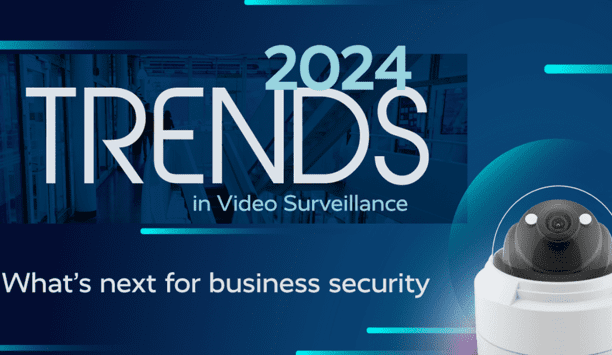
2024 trends in video surveillance
Download
How intelligent video is transforming banking and financial institutions
Download
Securing data centres: Varied technologies and exacting demands
Download
Best practices for asset management
Download
Understanding the IT needs of video surveillance
Download
Using artificial intelligence (AI) to automate physical security systems
Download
A modern guide to data loss prevention
Download
7 proven solutions for law enforcement key control and asset management
Download
Palm vein recognition
Download
Cybersecurity for enterprise: The essential guide to protecting your business
Download
The security challenges of data centers
Download
Access control system planning phase 2
Download
Honeywell GARD USB threat report 2024
Download
Access control system planning phase 1
Download
The truth behind 9 mobile access myths
Download
2024 trends in video surveillance
Download
How intelligent video is transforming banking and financial institutions
Download
Securing data centres: Varied technologies and exacting demands
Download
Best practices for asset management
Download
Understanding the IT needs of video surveillance
Download
Using artificial intelligence (AI) to automate physical security systems
Download
A modern guide to data loss prevention
Download
7 proven solutions for law enforcement key control and asset management
Download
Palm vein recognition
Download
Cybersecurity for enterprise: The essential guide to protecting your business
Download
The security challenges of data centers
Download
Access control system planning phase 2
Download
Honeywell GARD USB threat report 2024
Download

Videos
Data Security: Manufacturers & Suppliers

Using artificial intelligence (AI) to automate physical security systems
Download
A modern guide to data loss prevention
Download
7 proven solutions for law enforcement key control and asset management
Download
The truth behind 9 mobile access myths
Download
Access control system planning phase 2
Download
